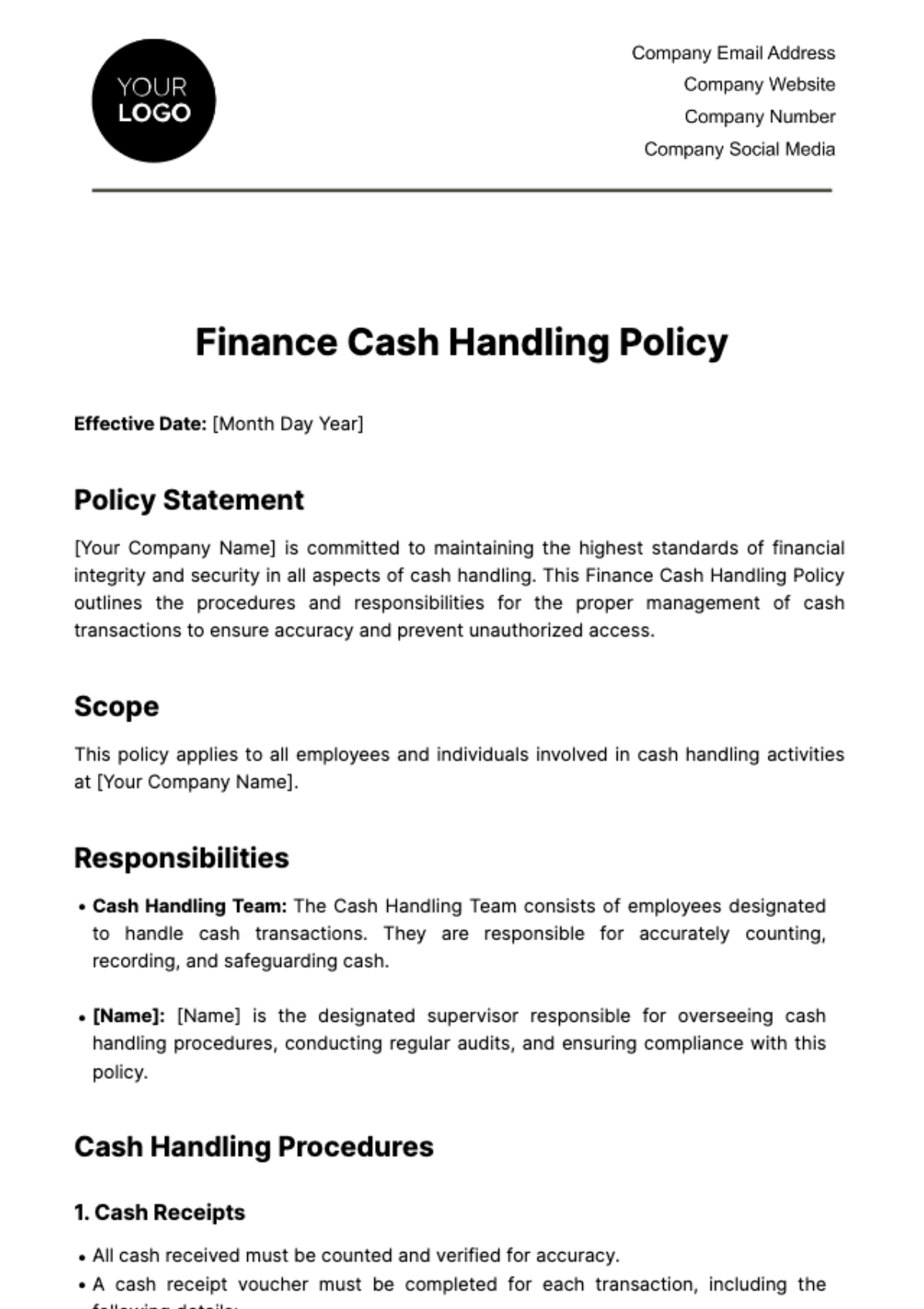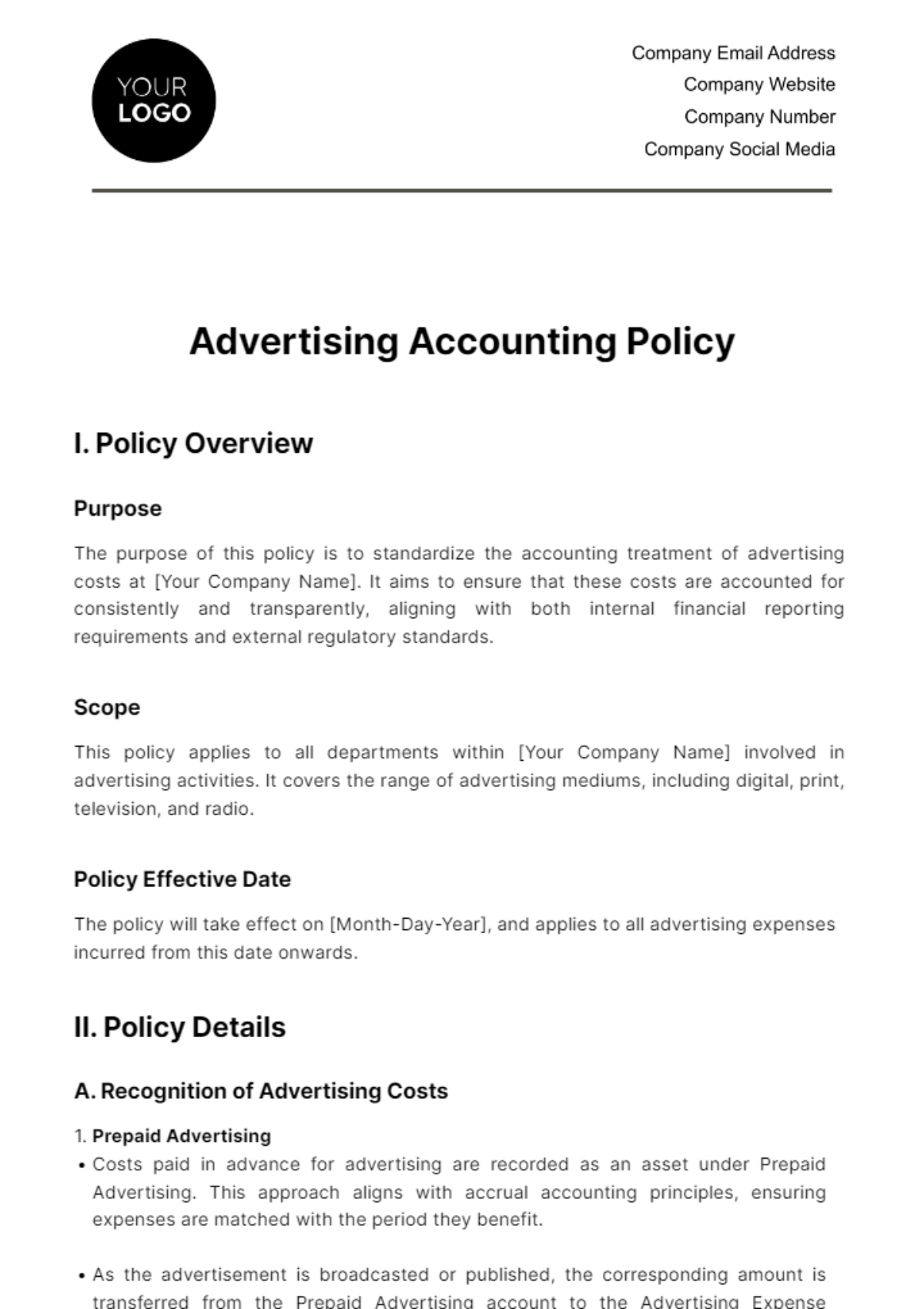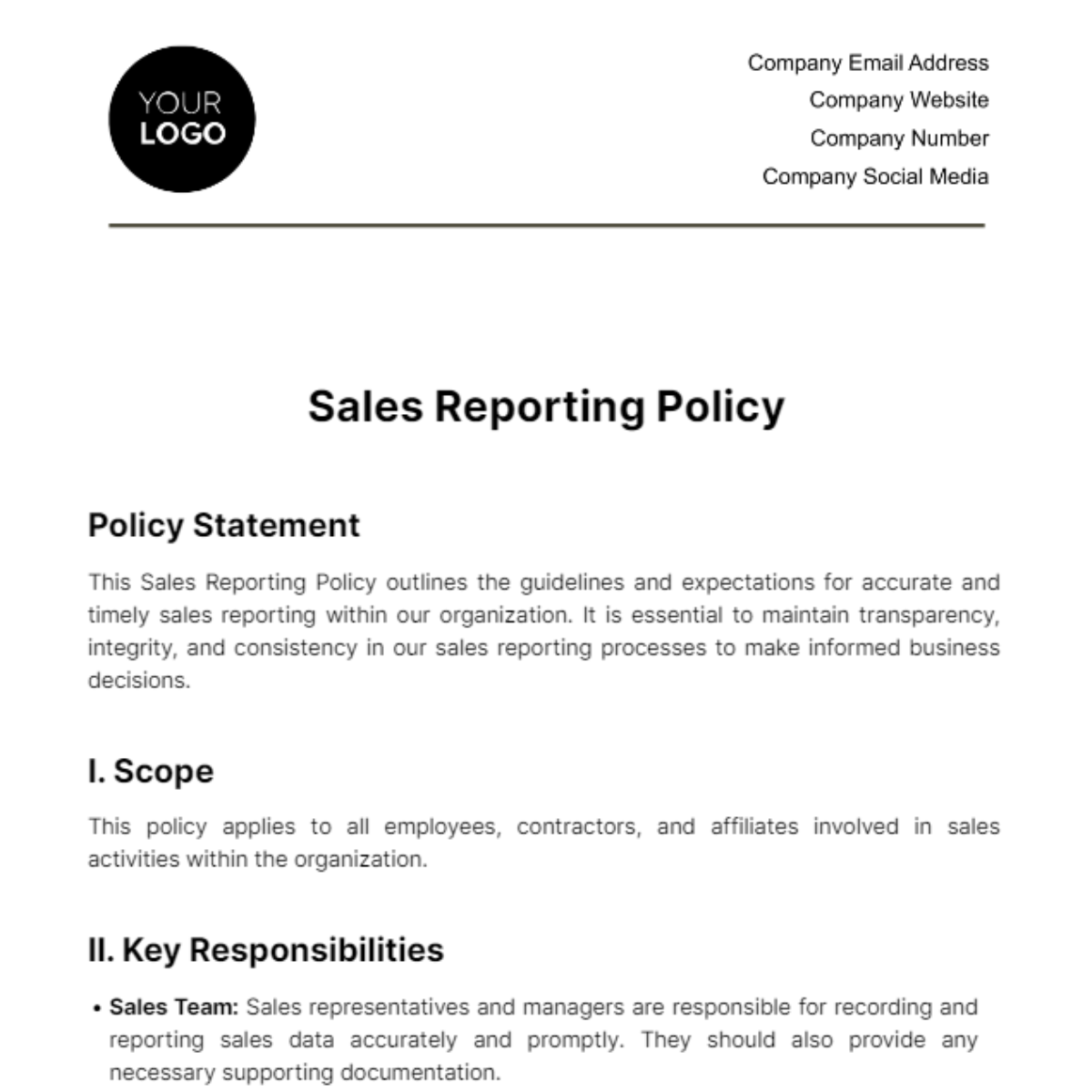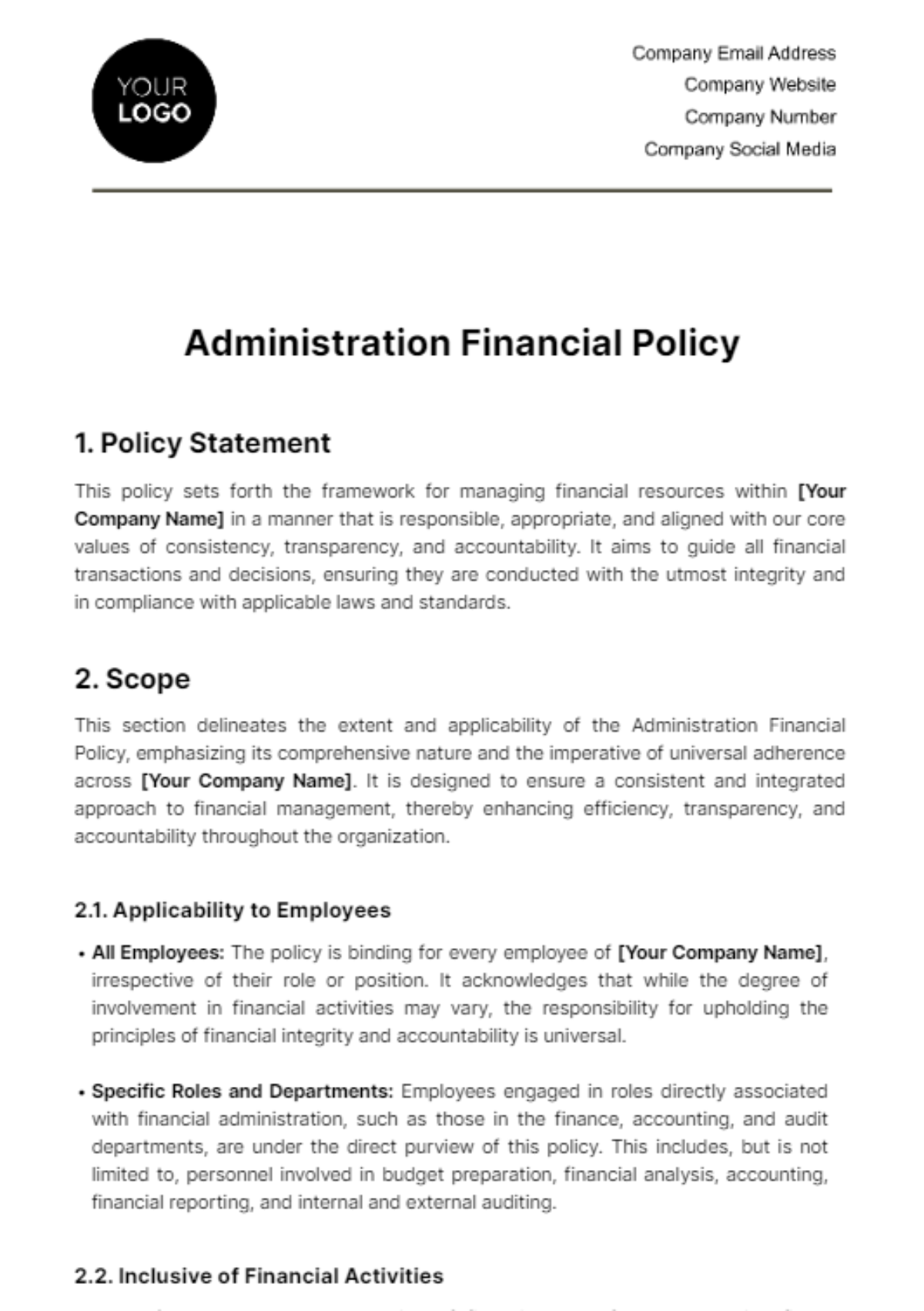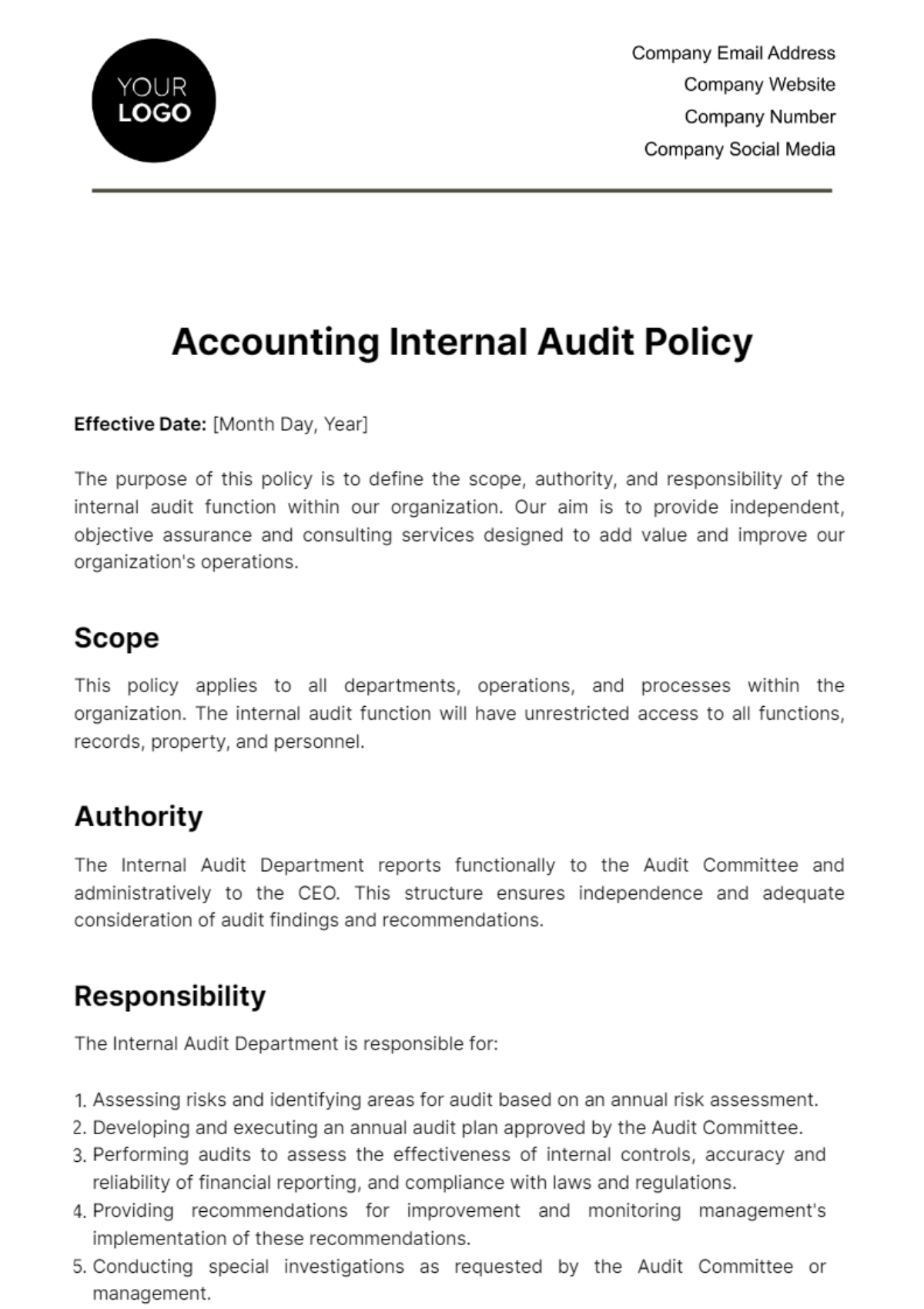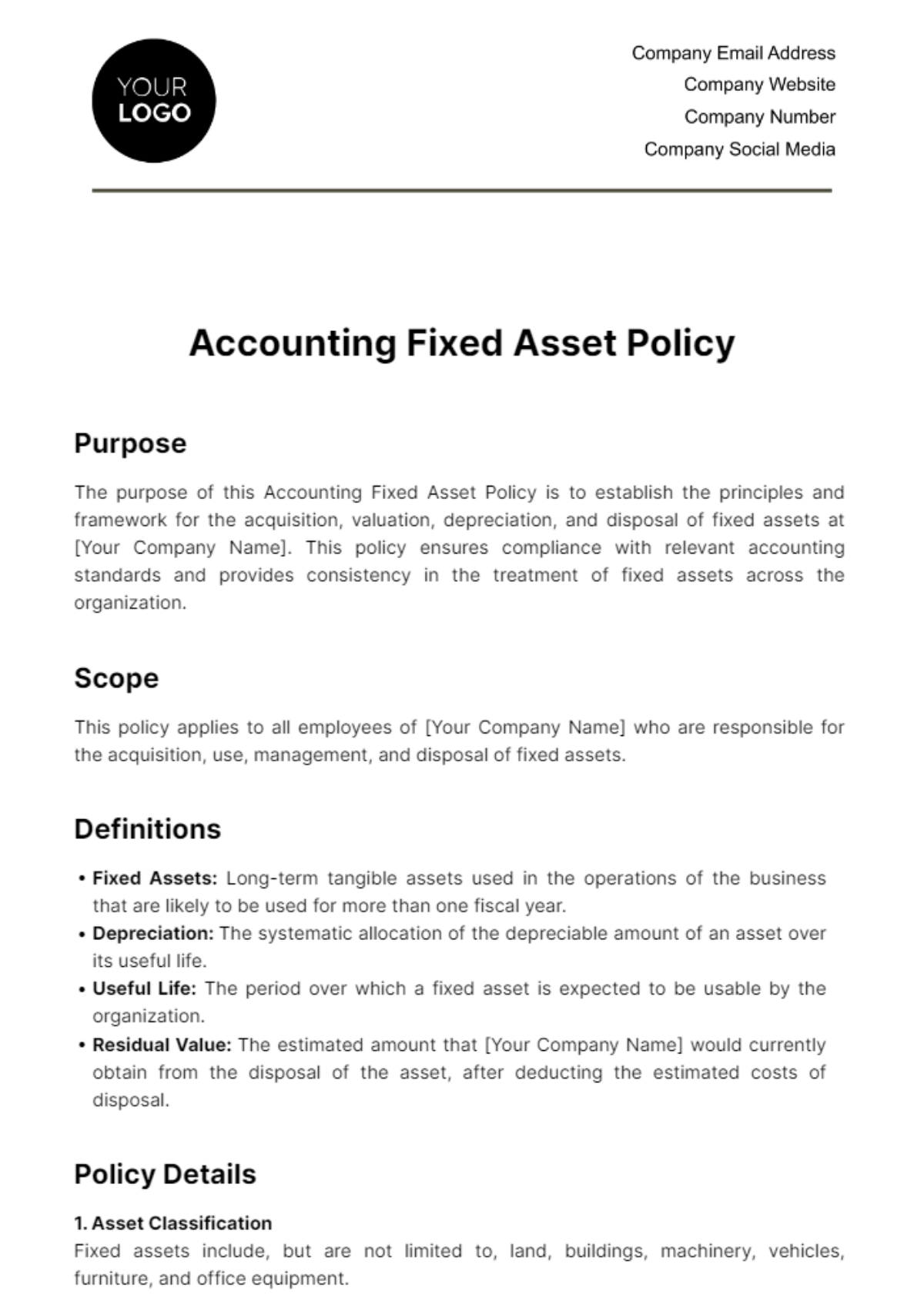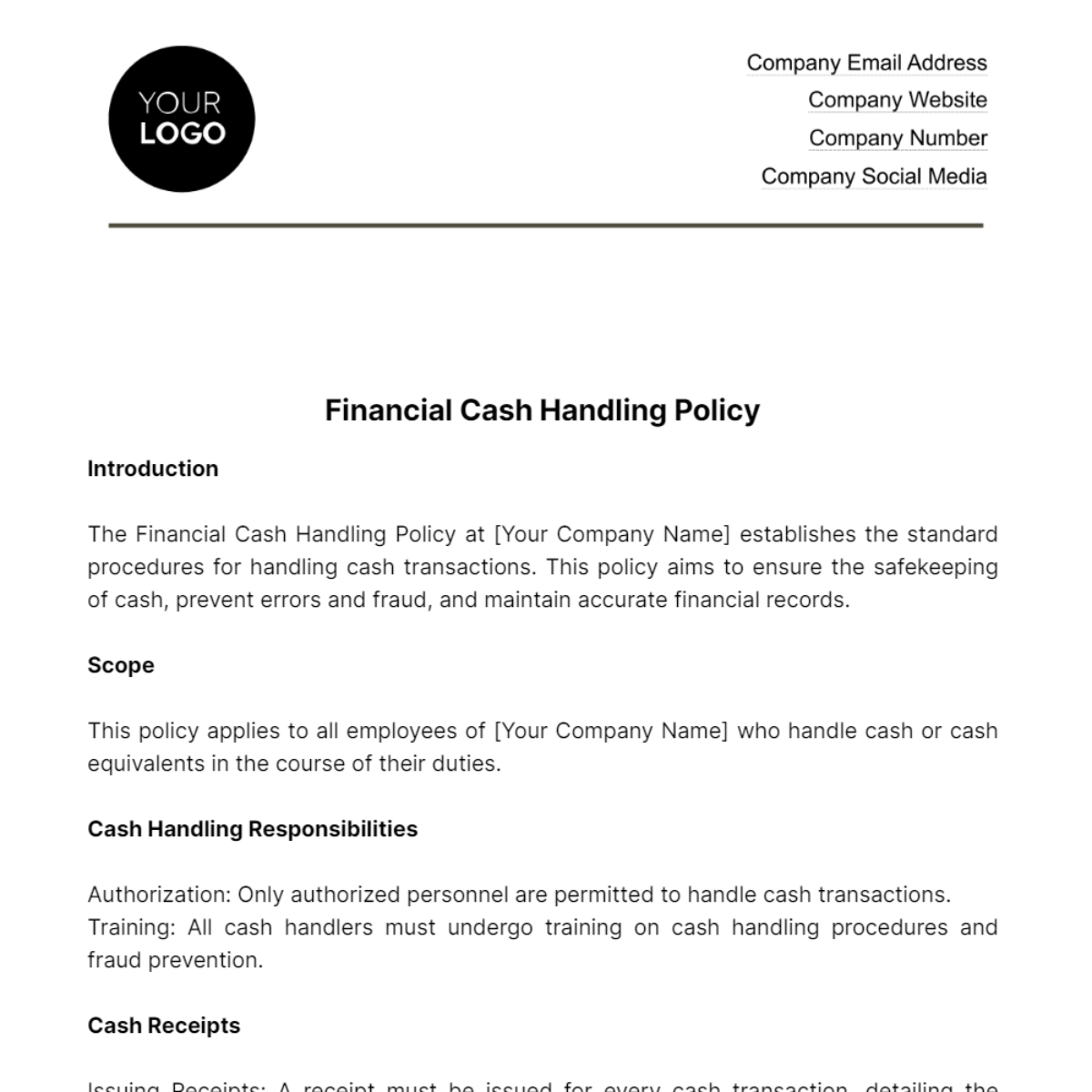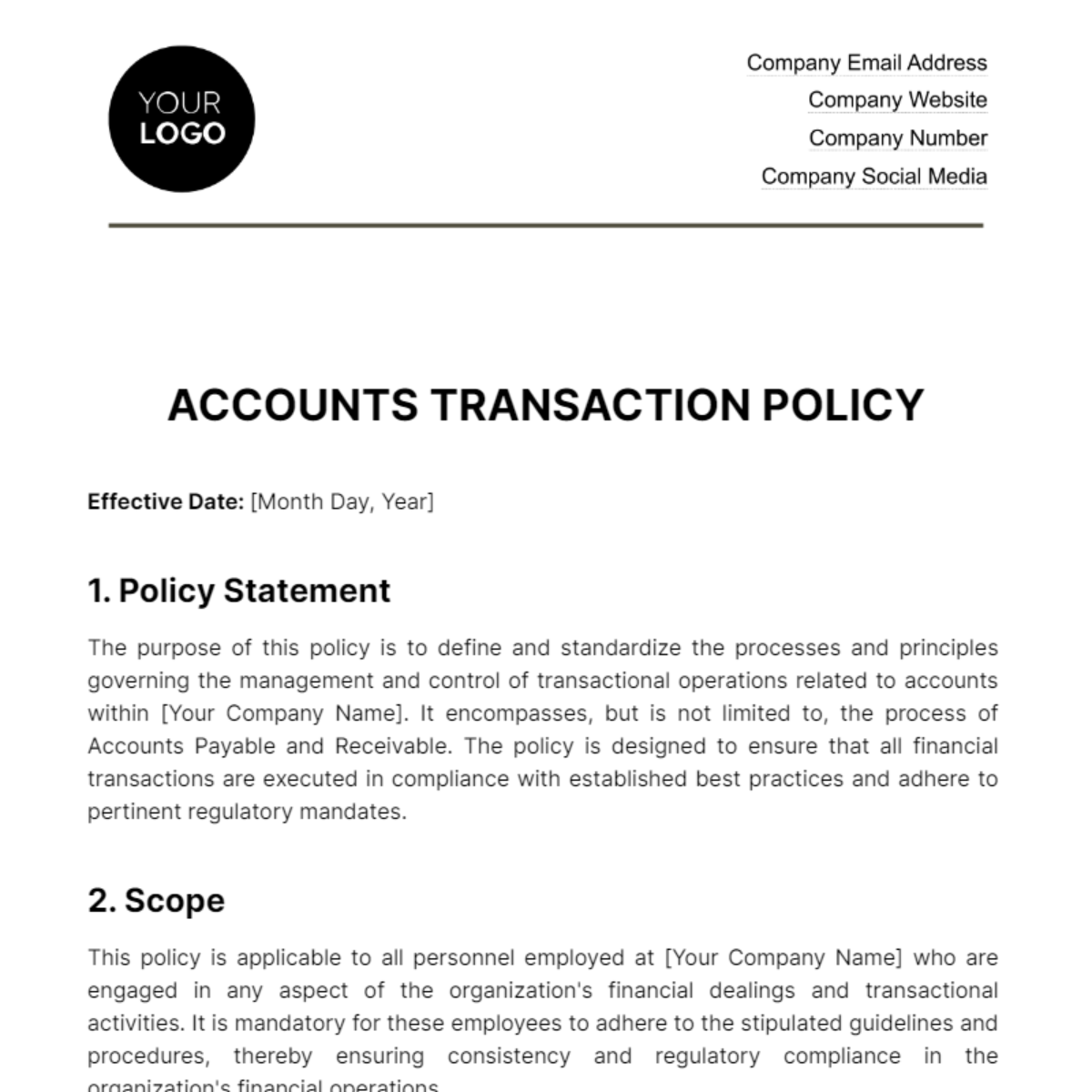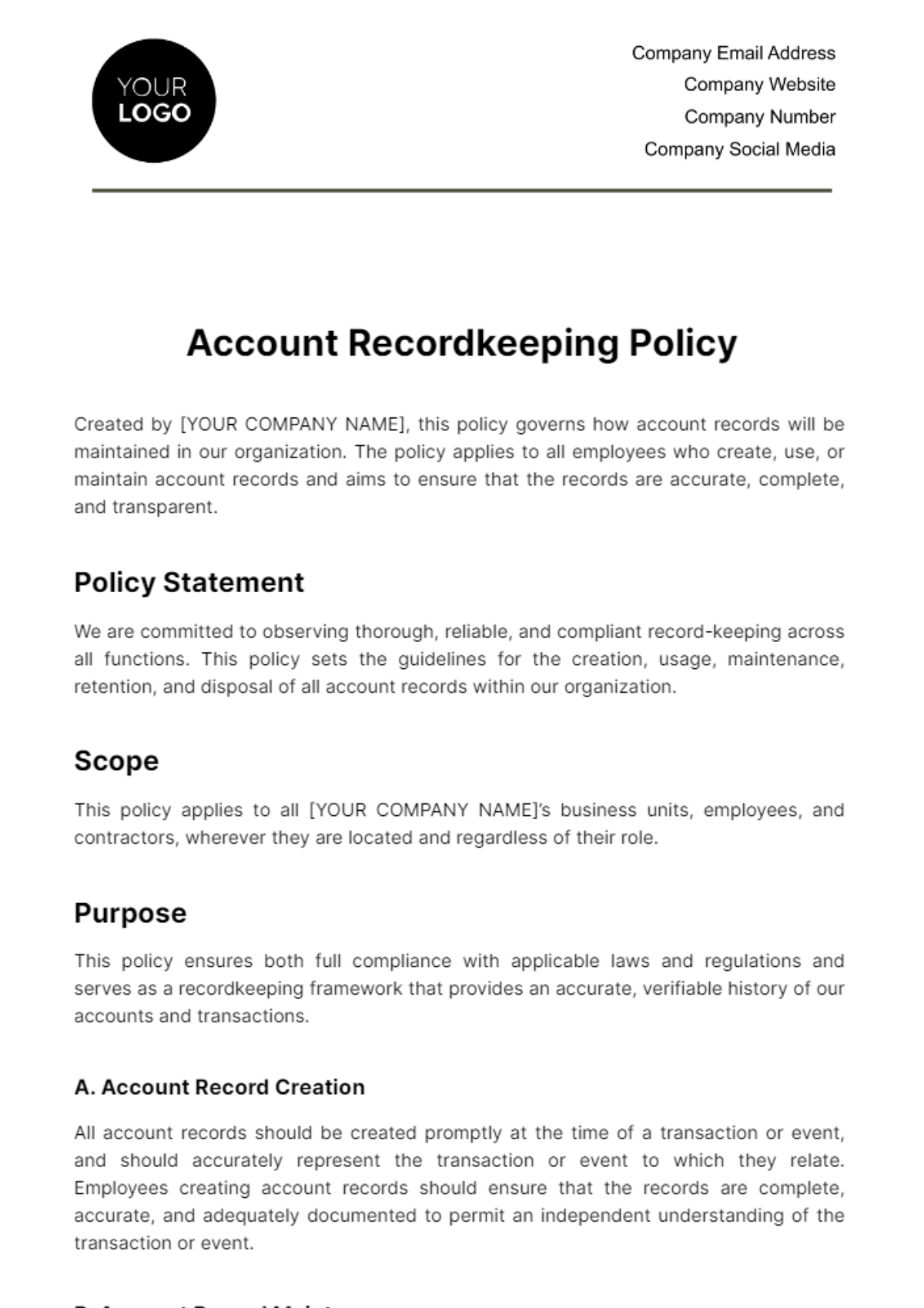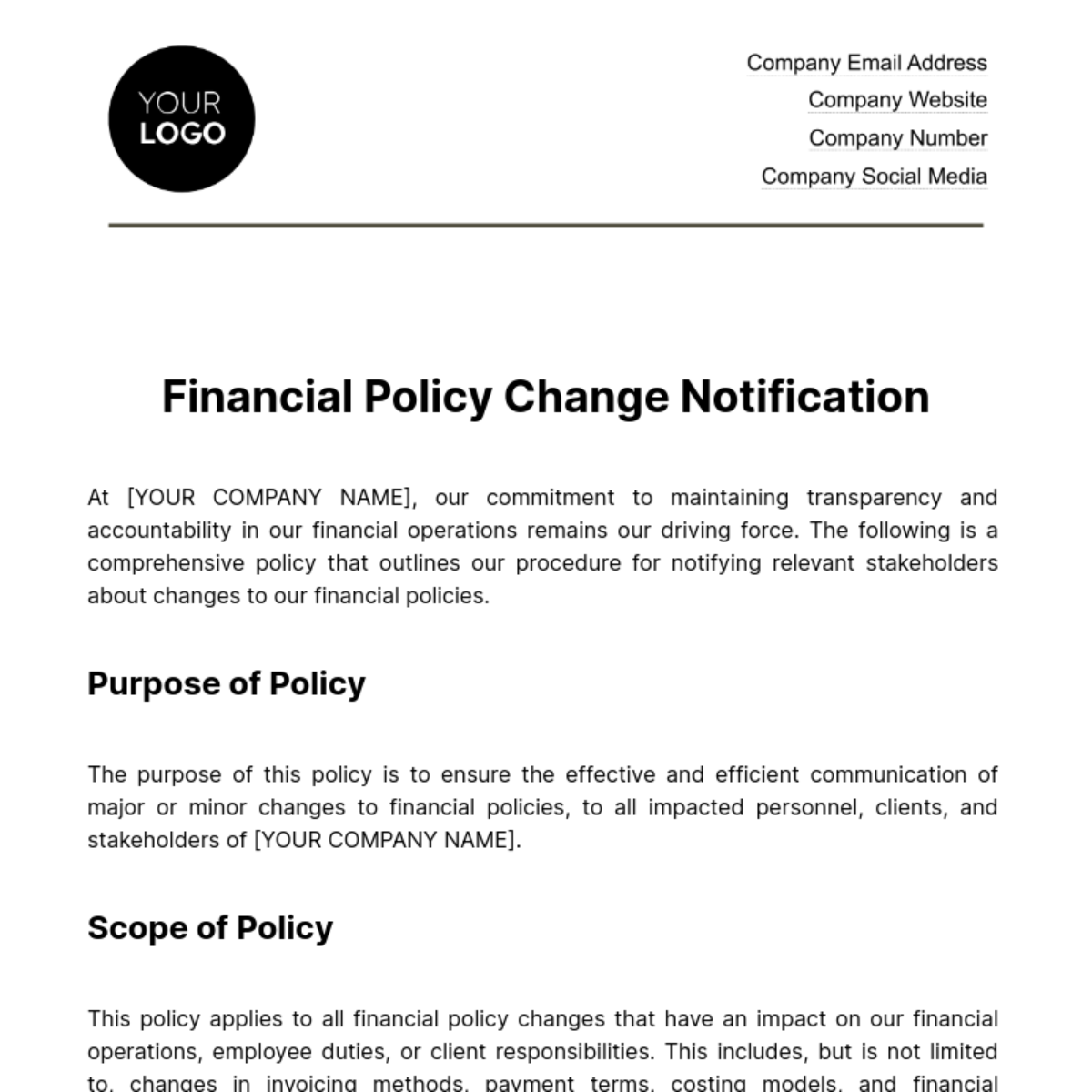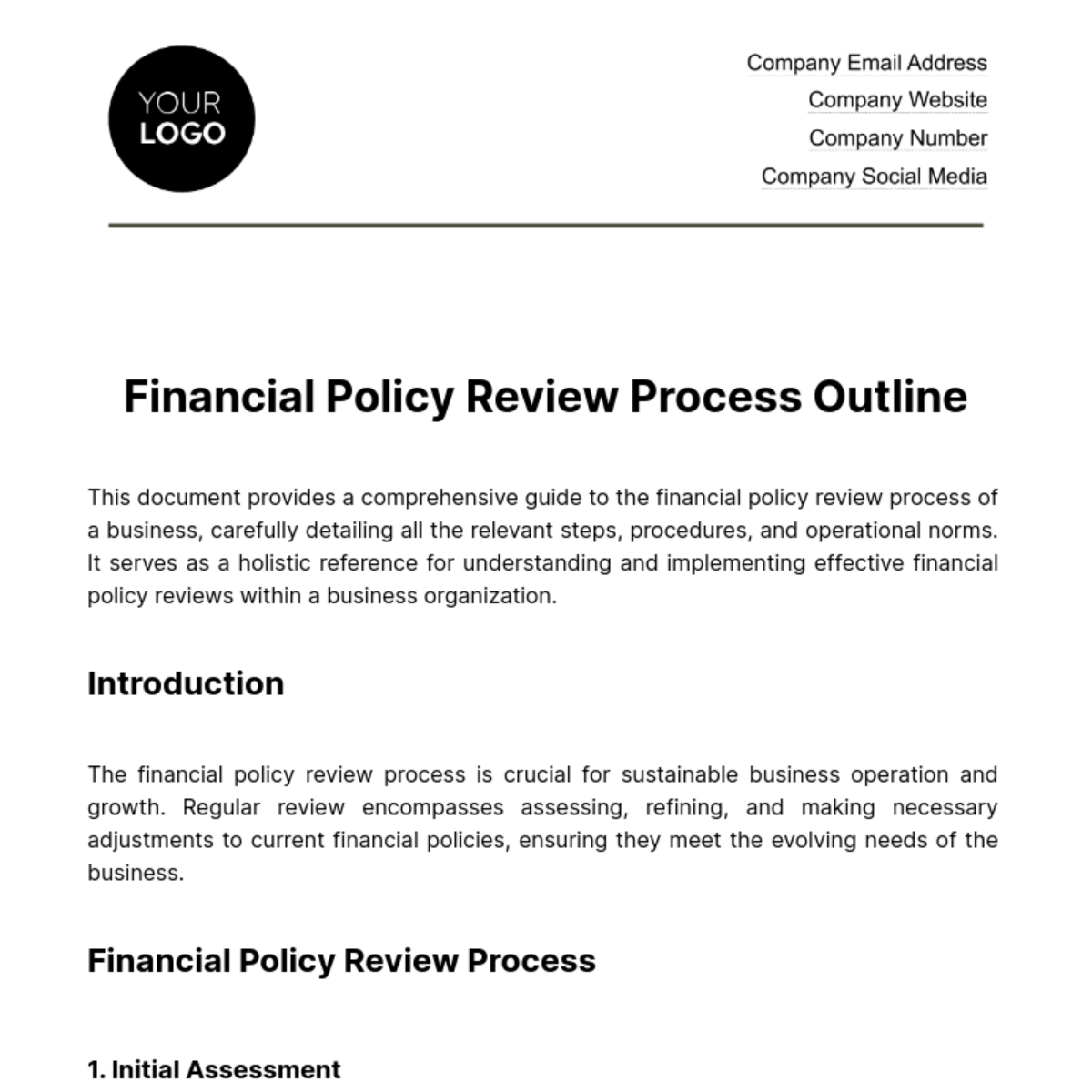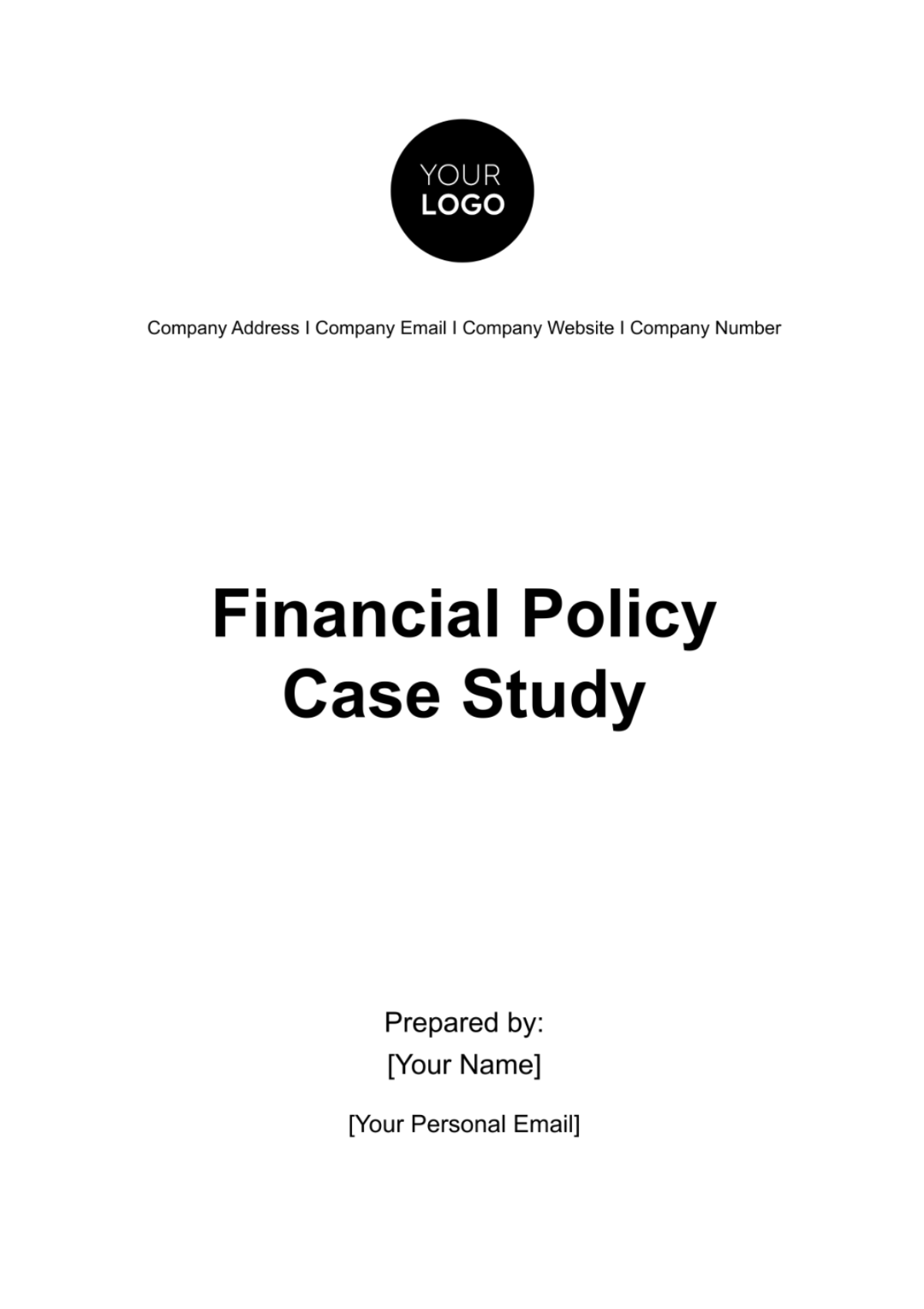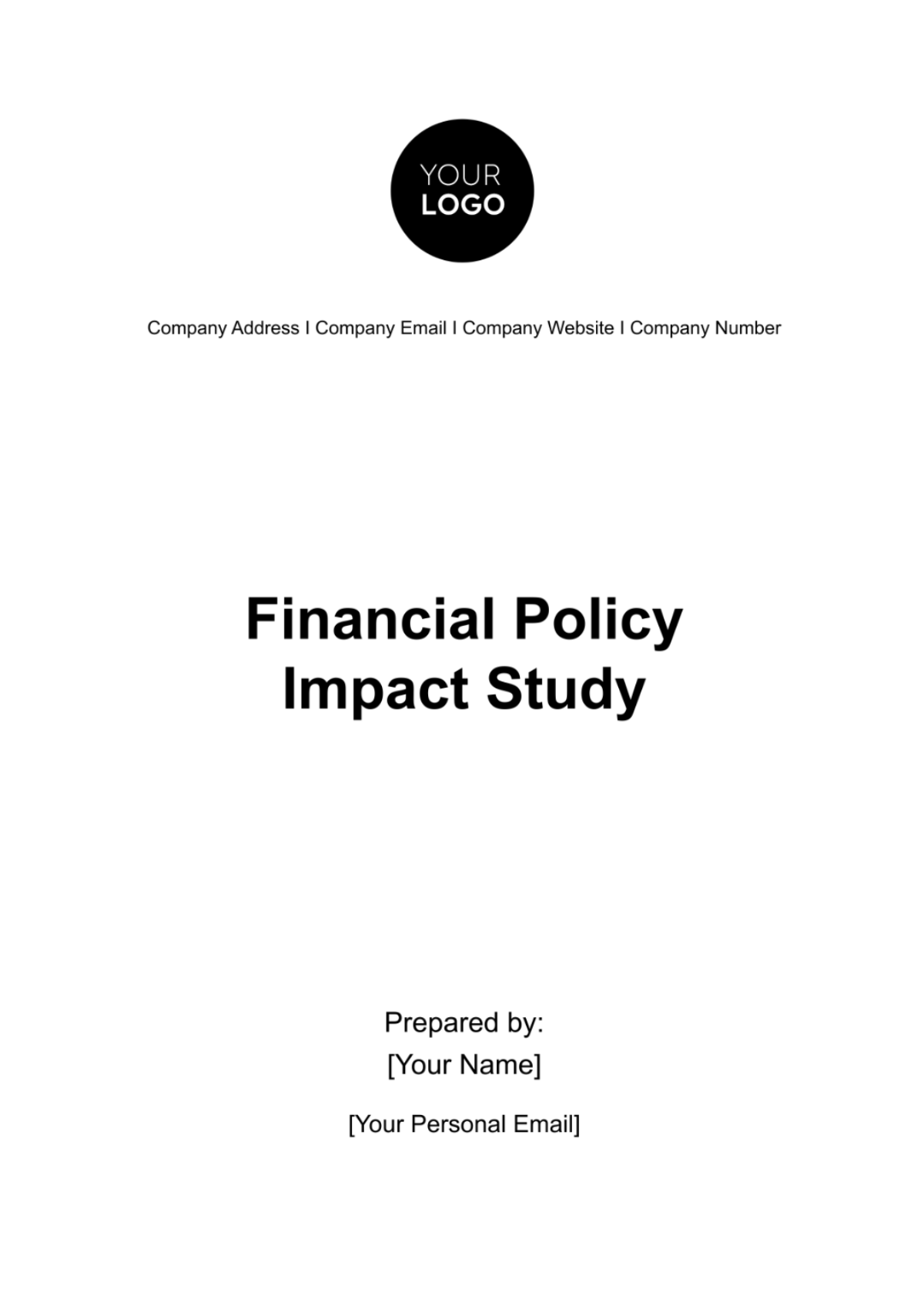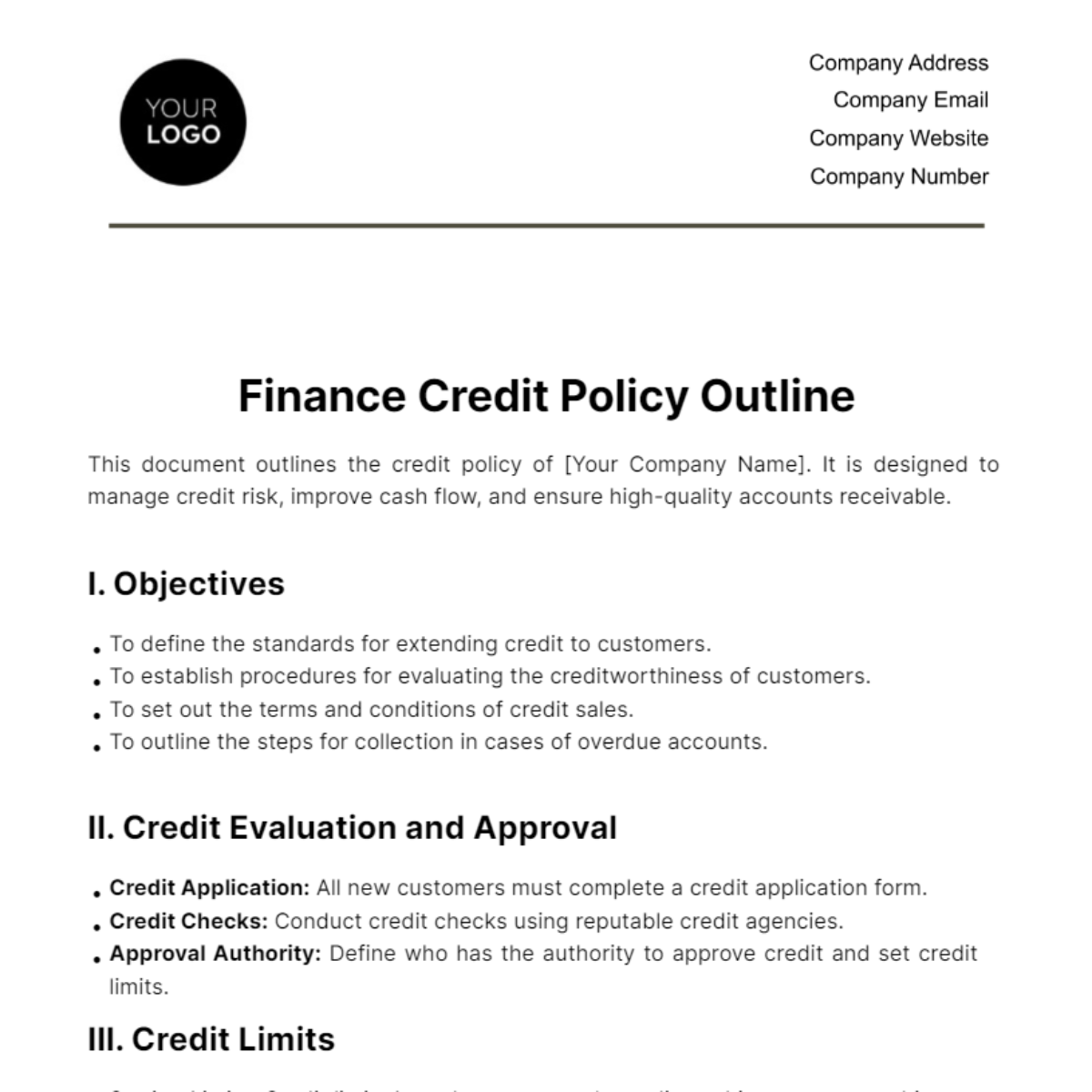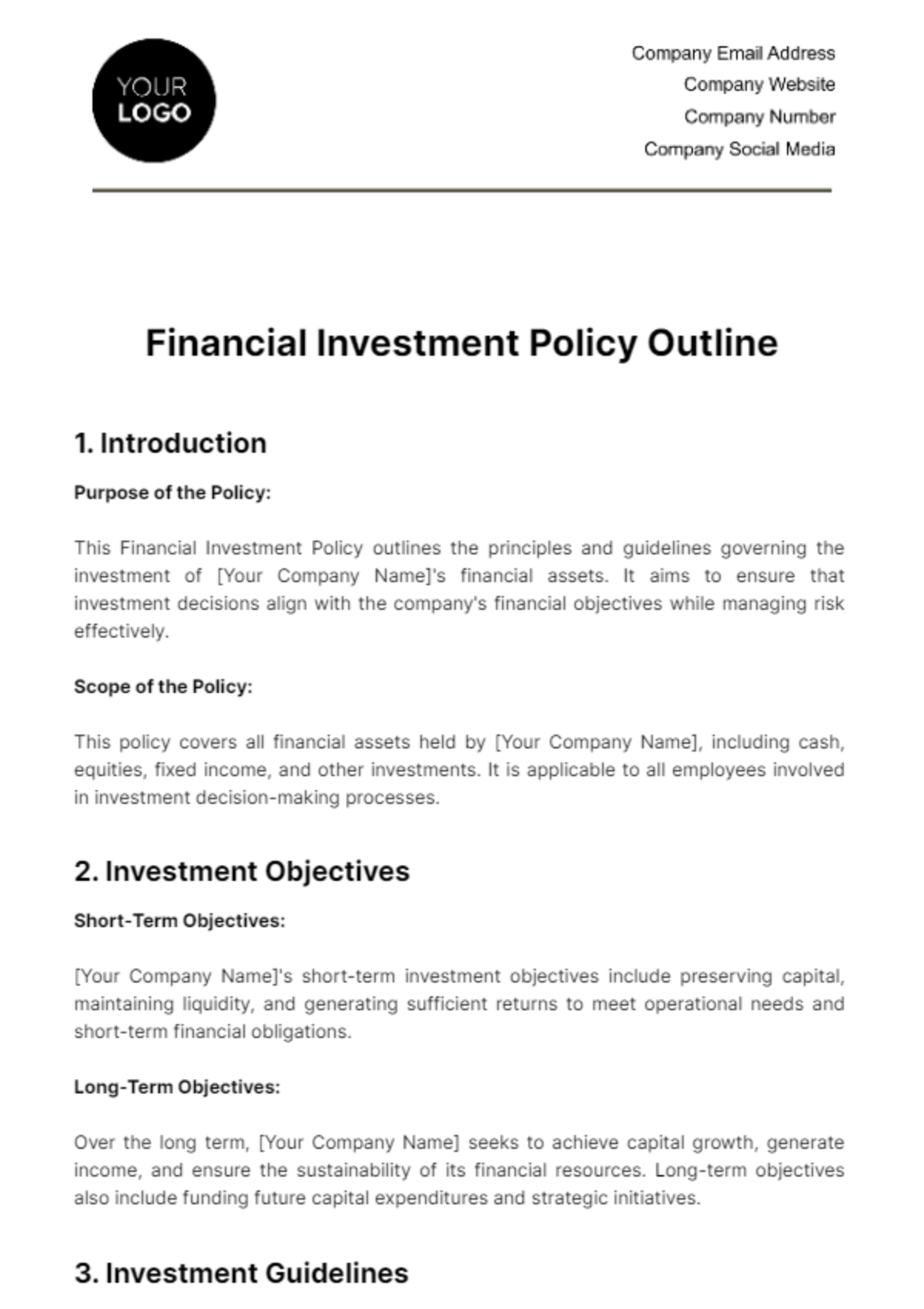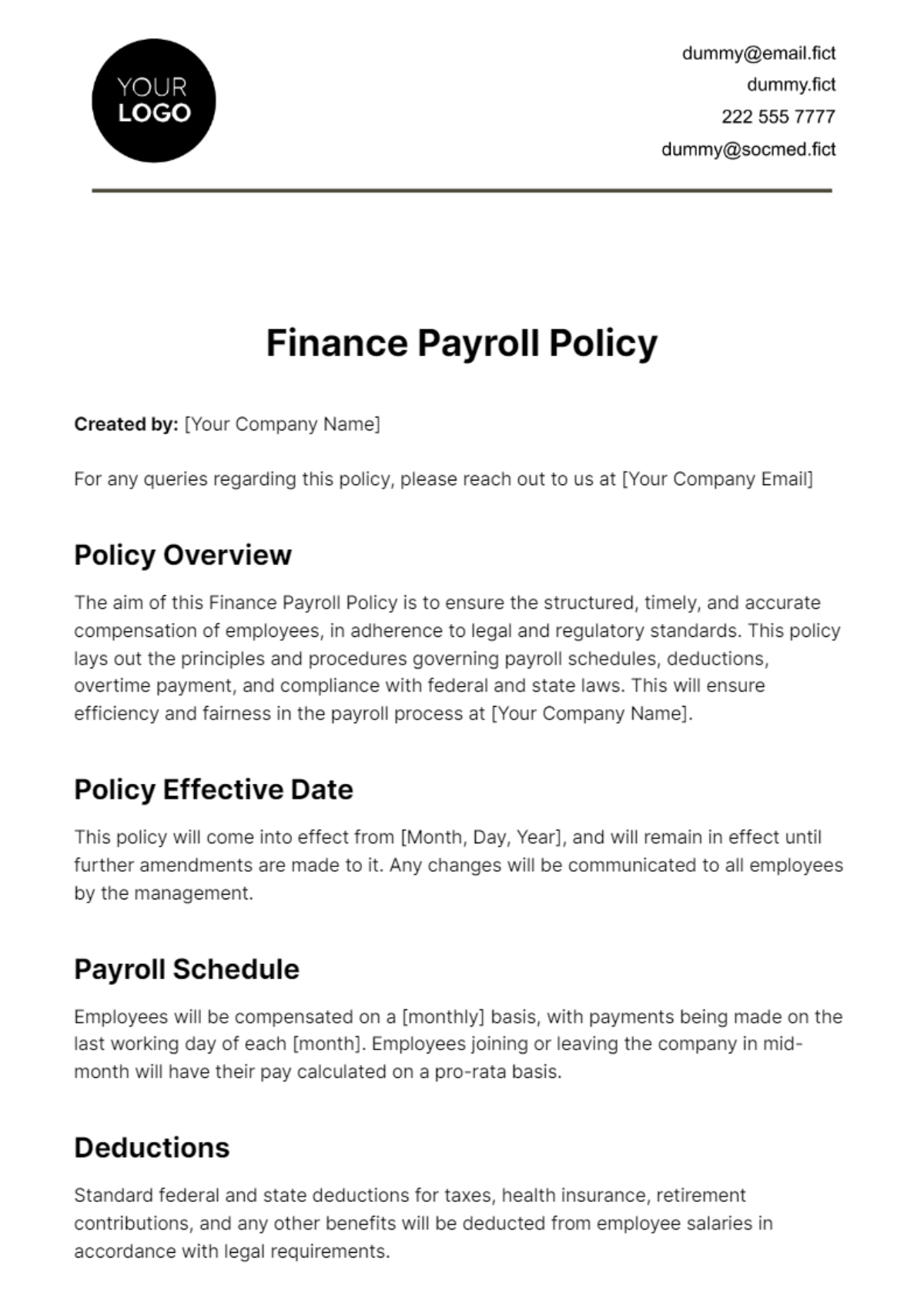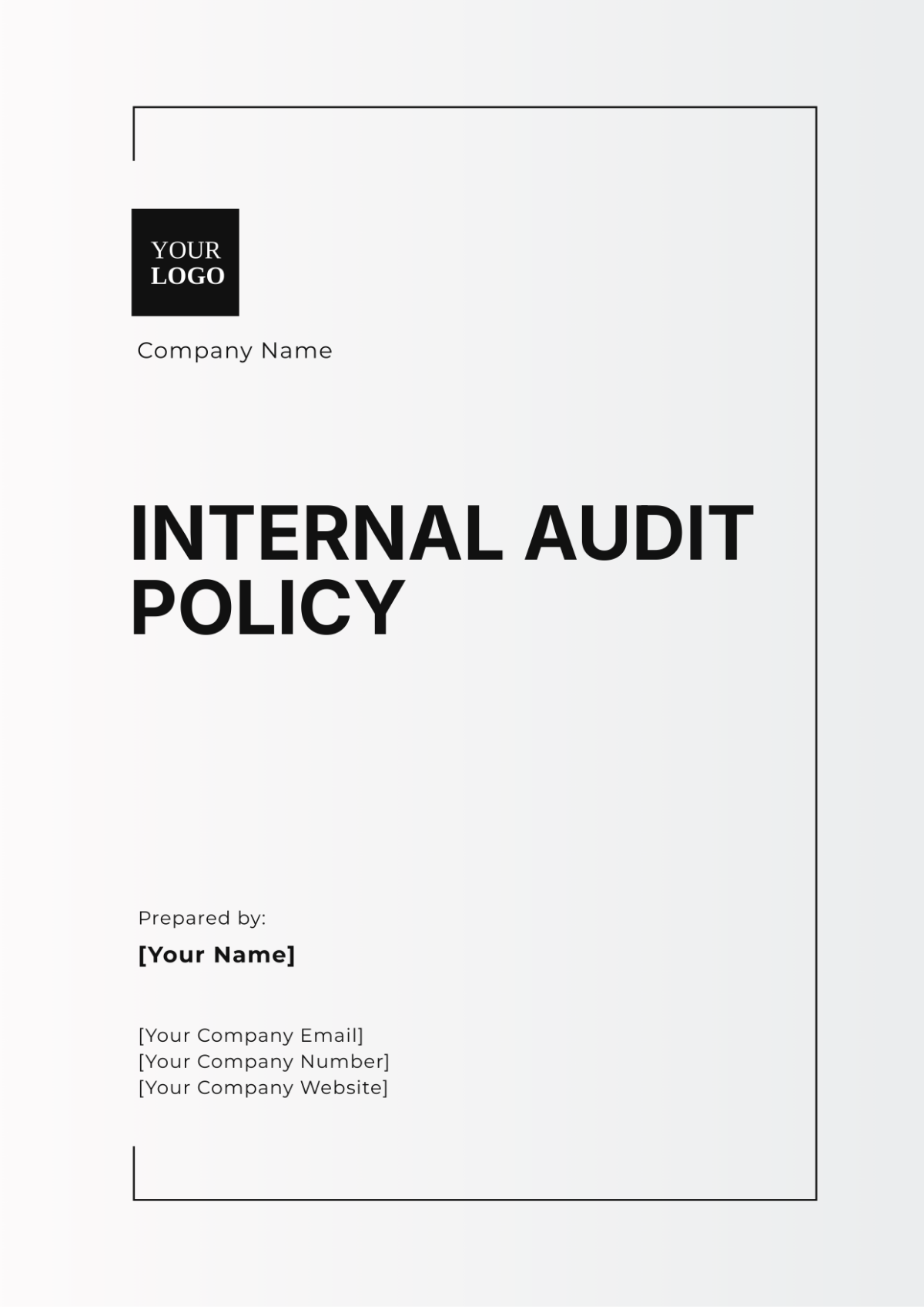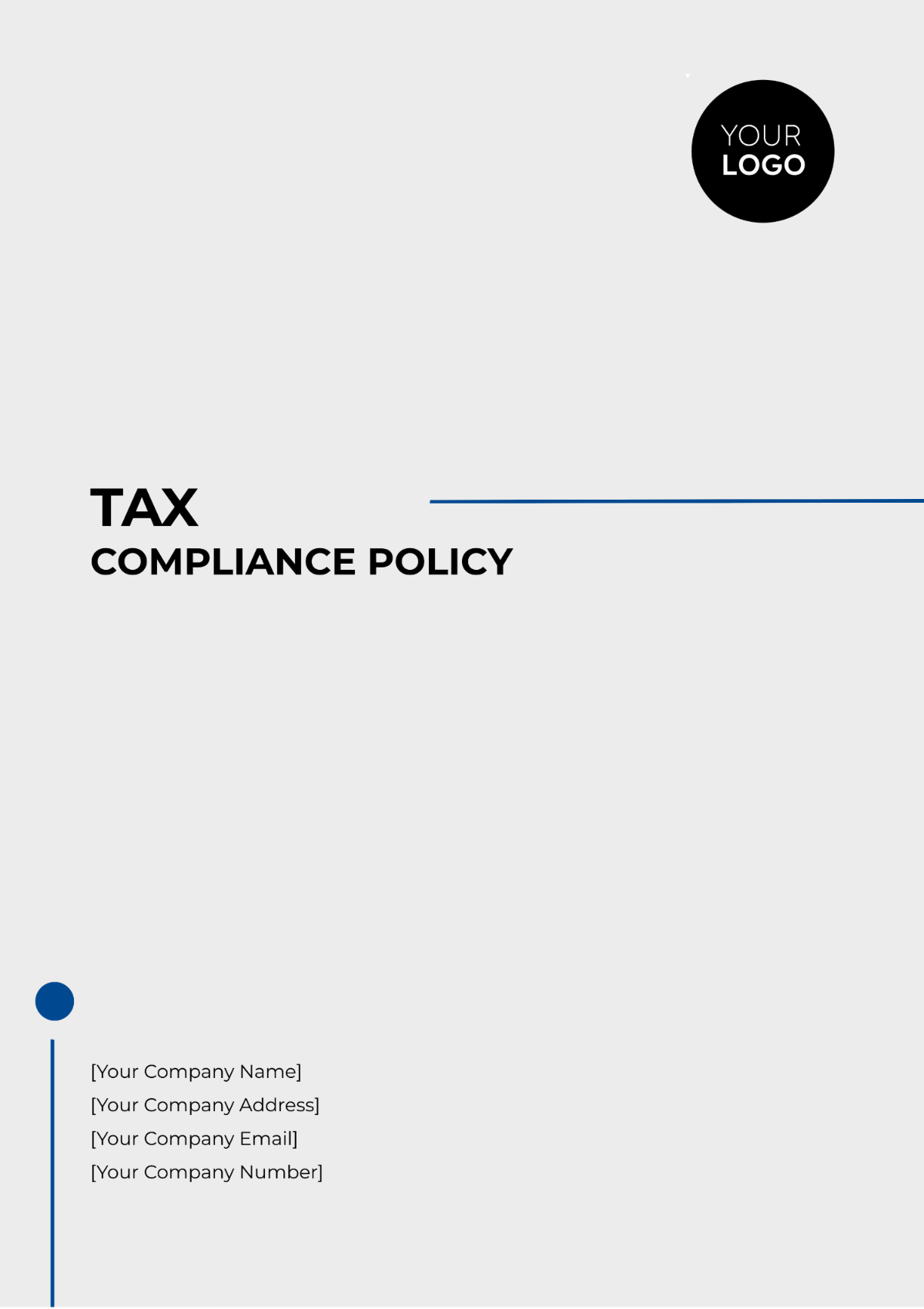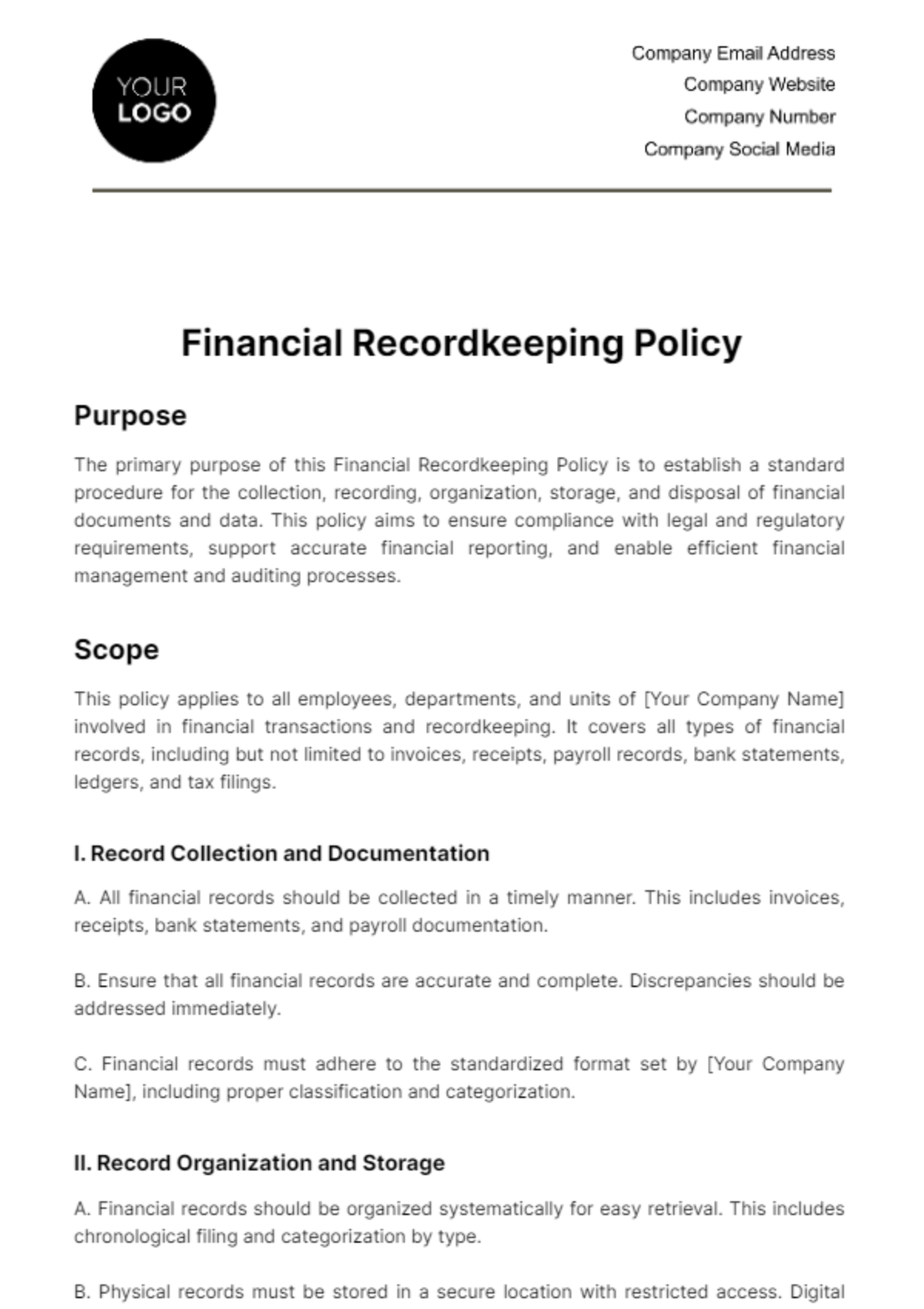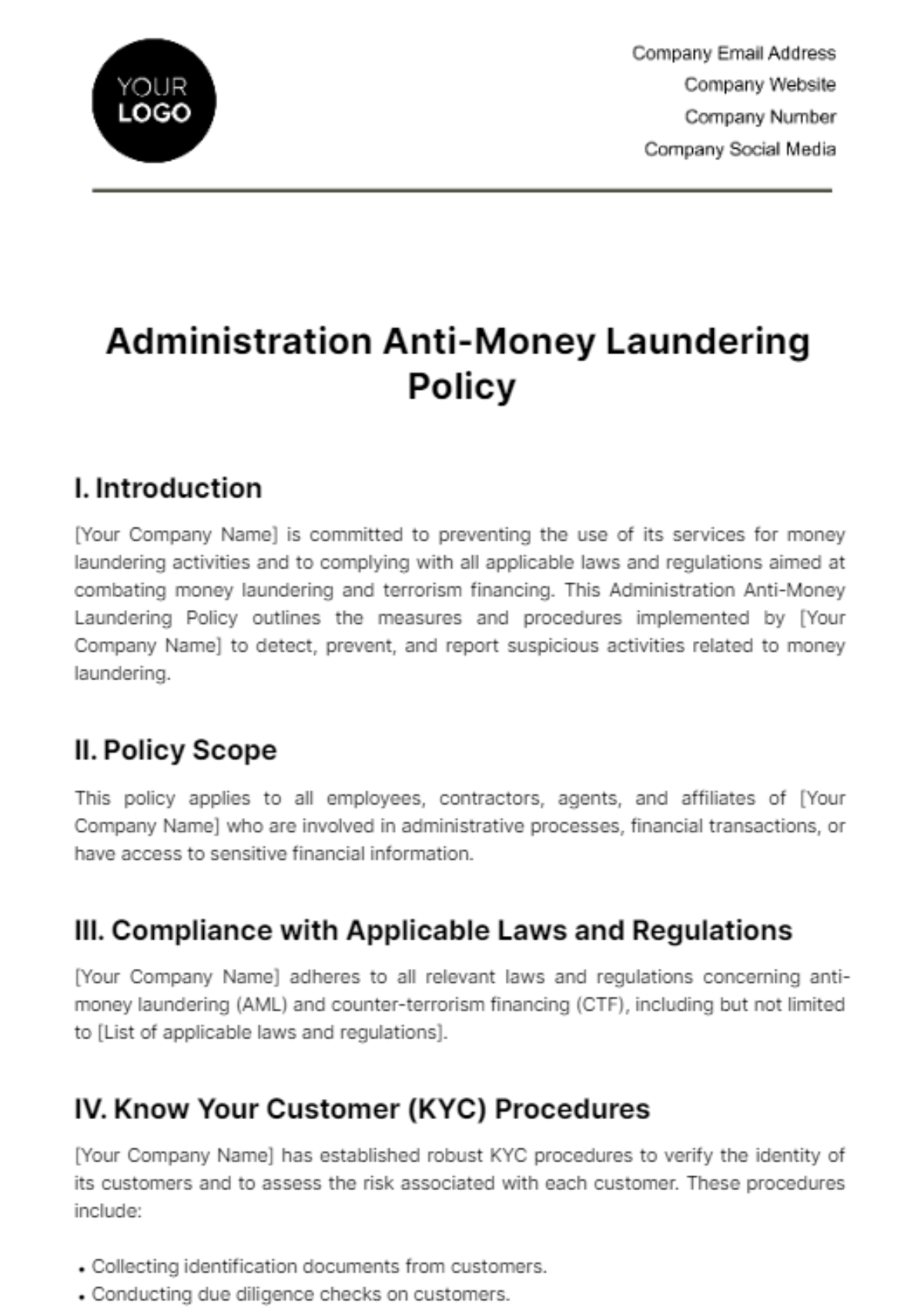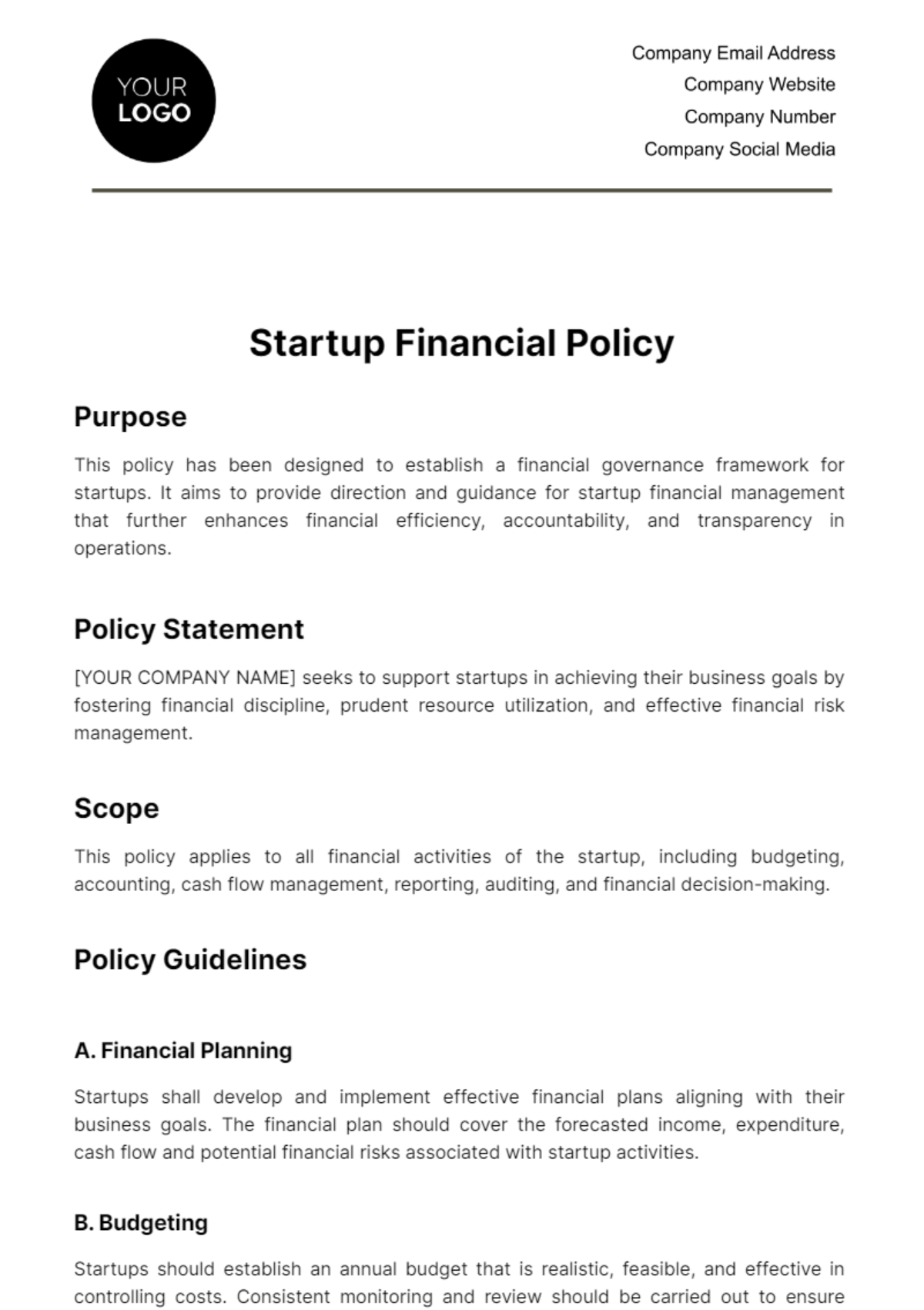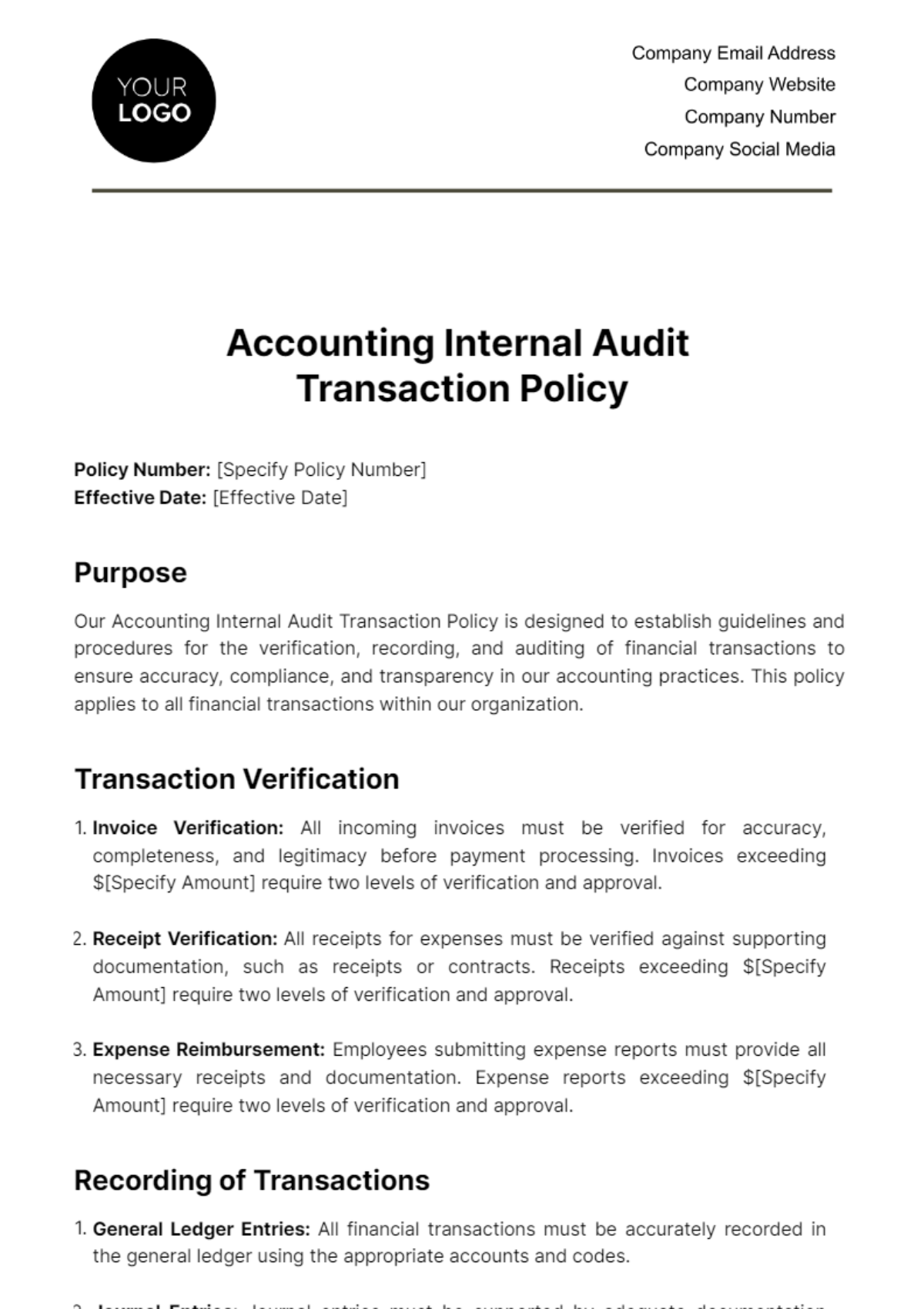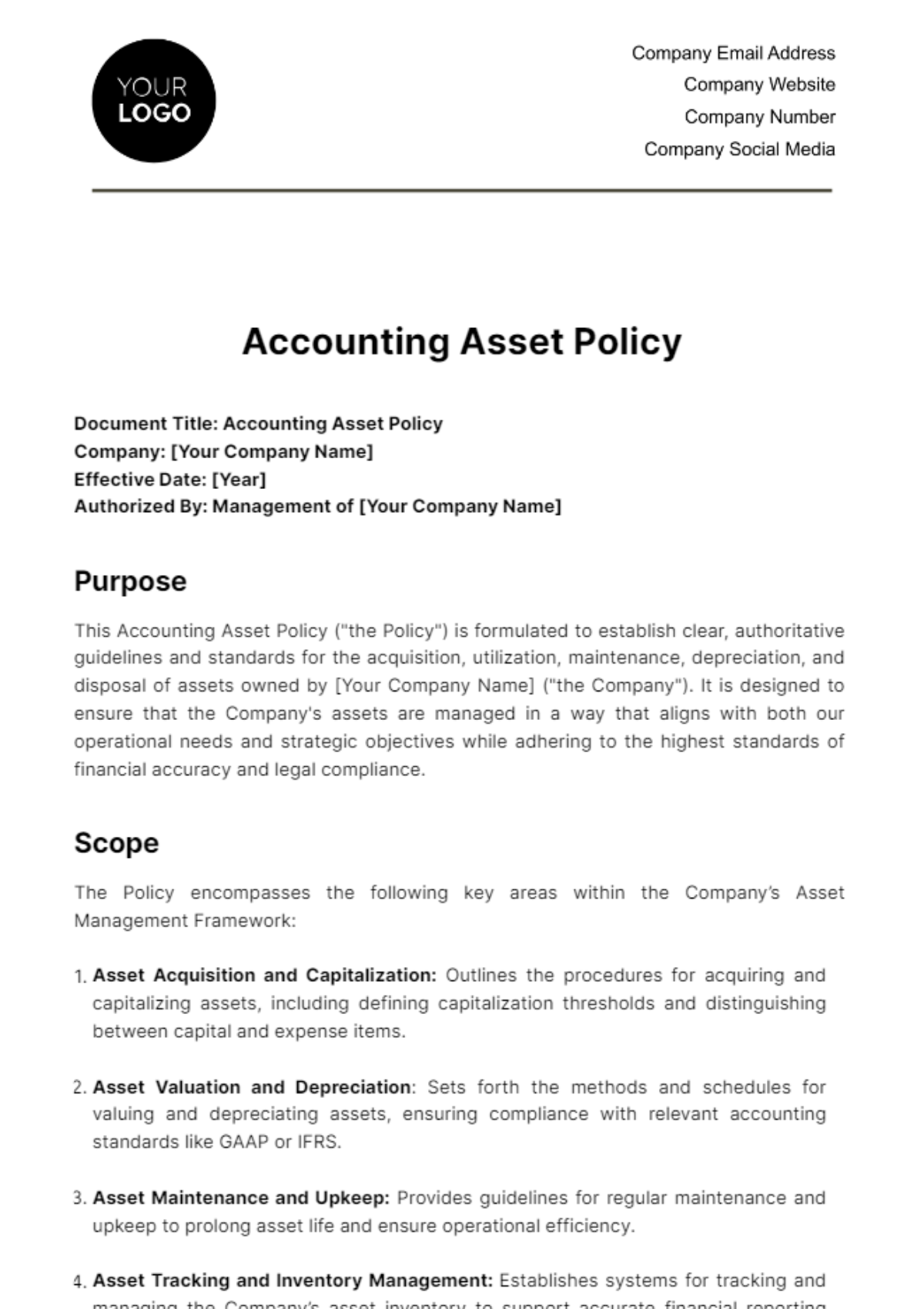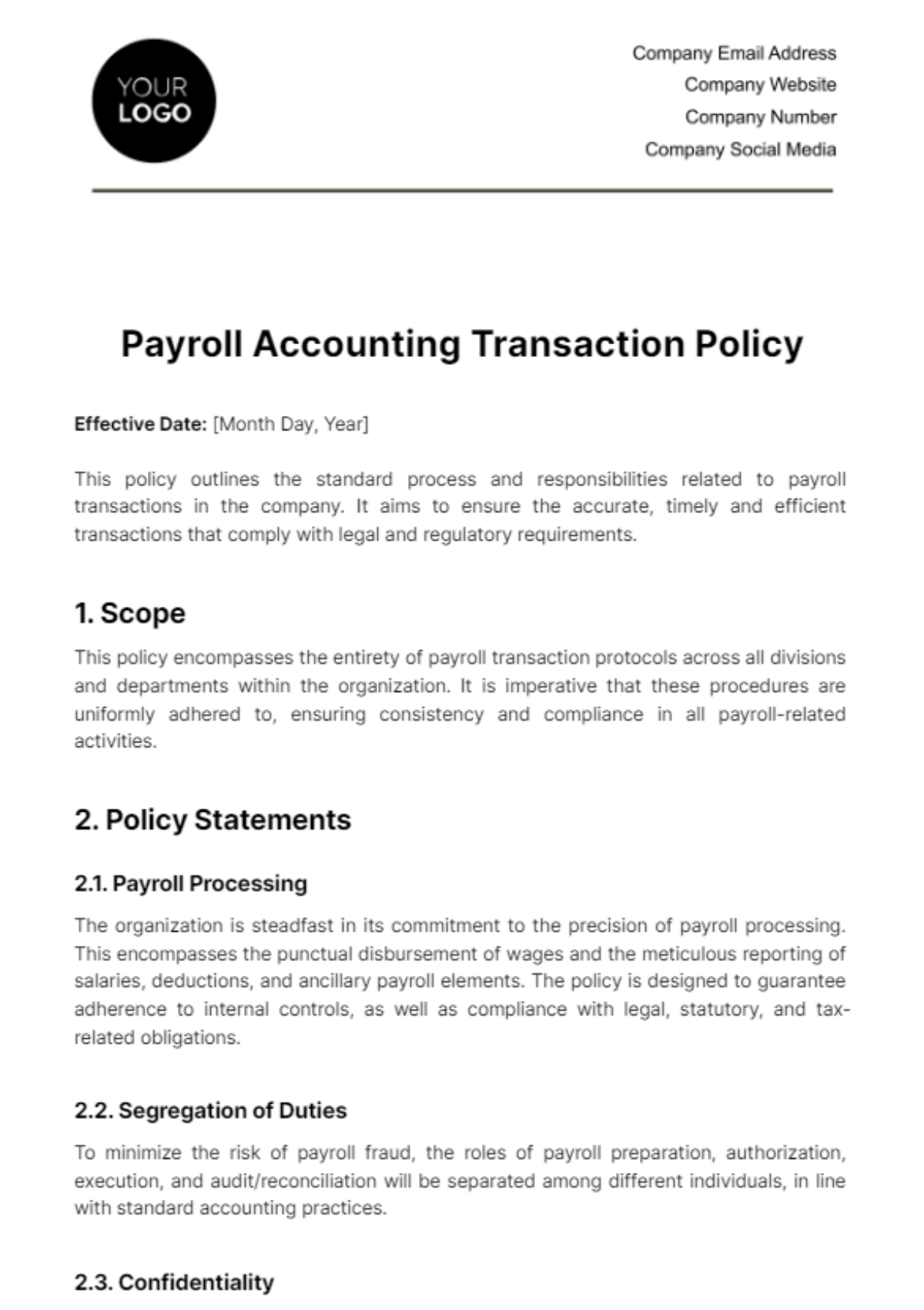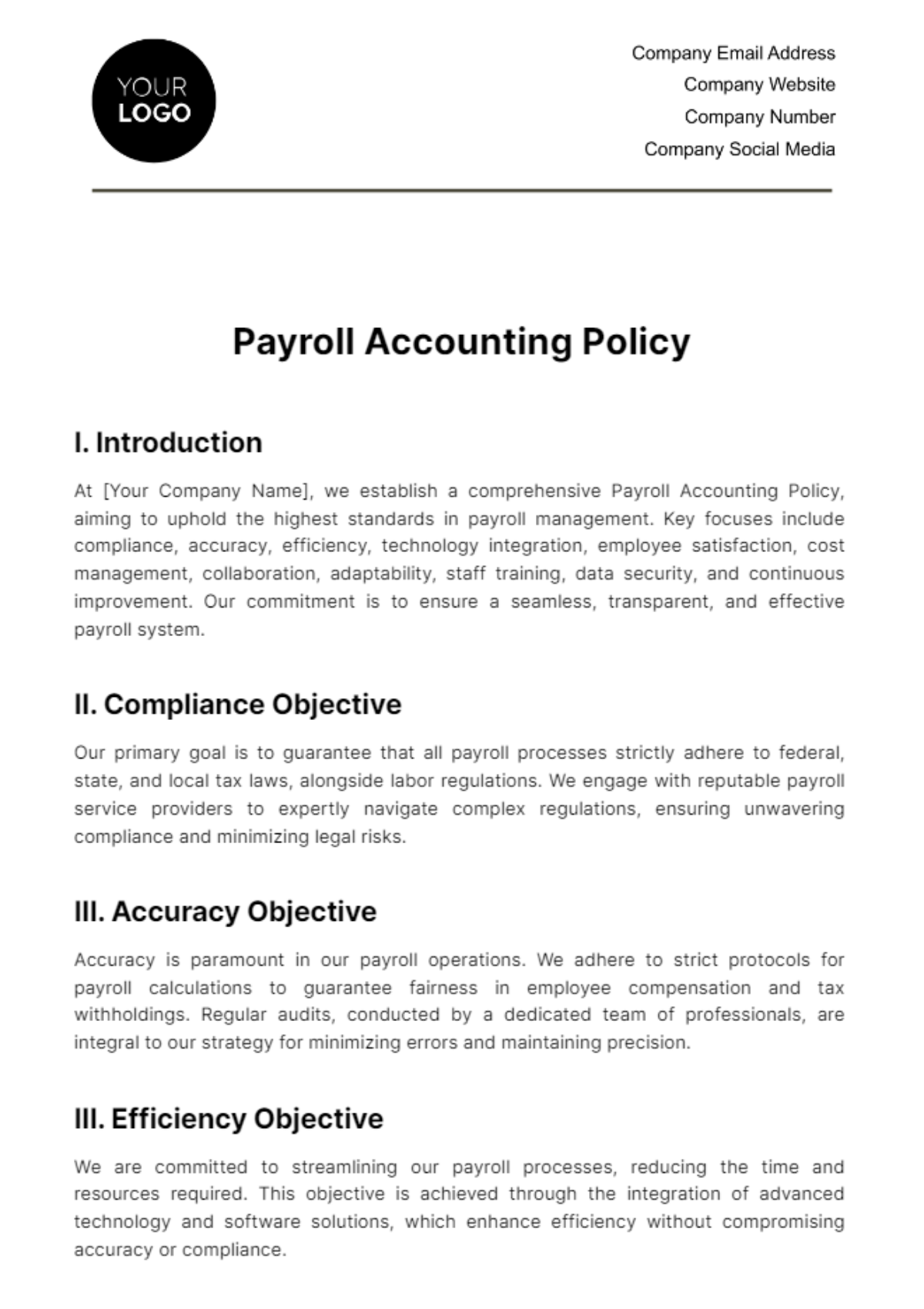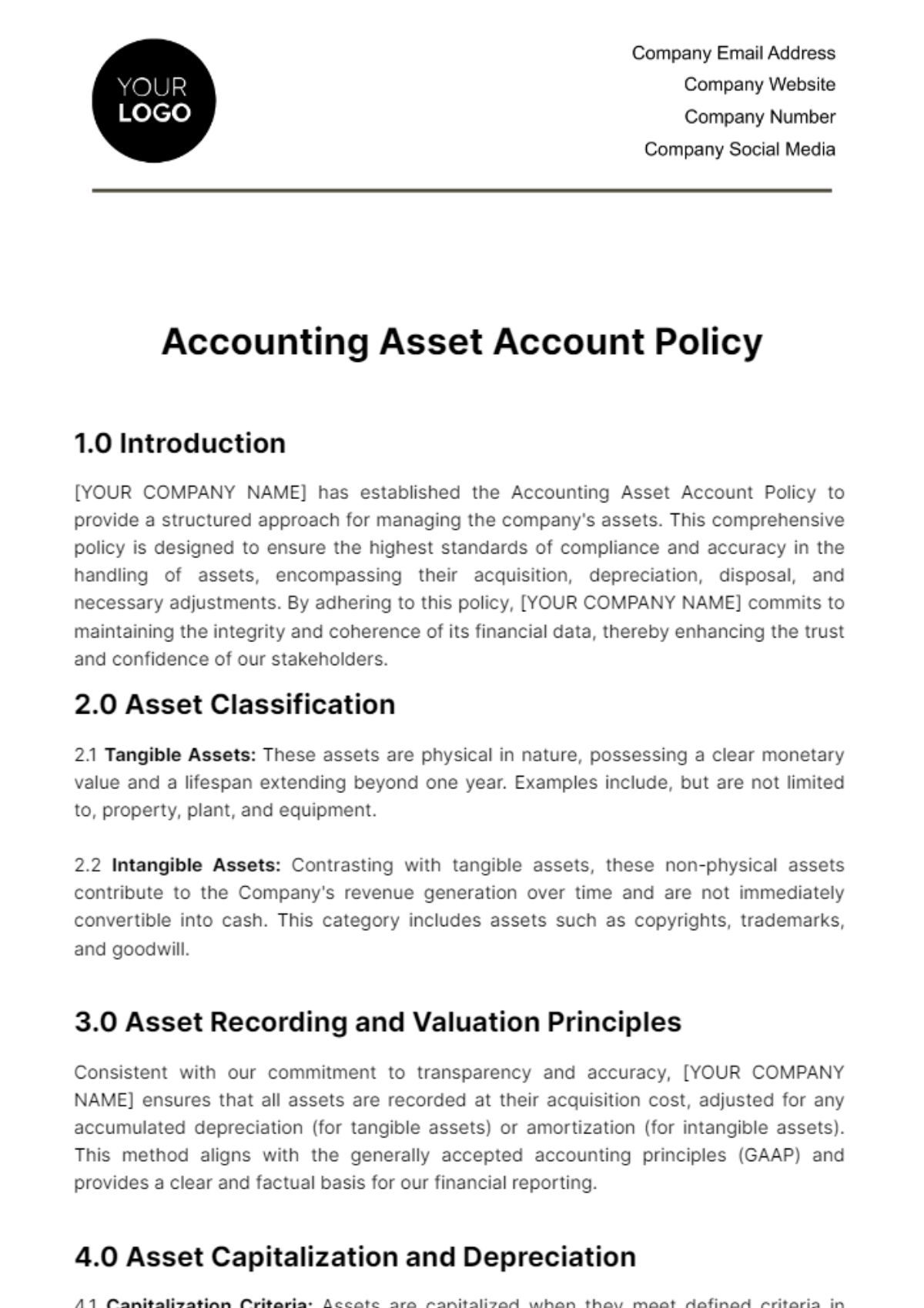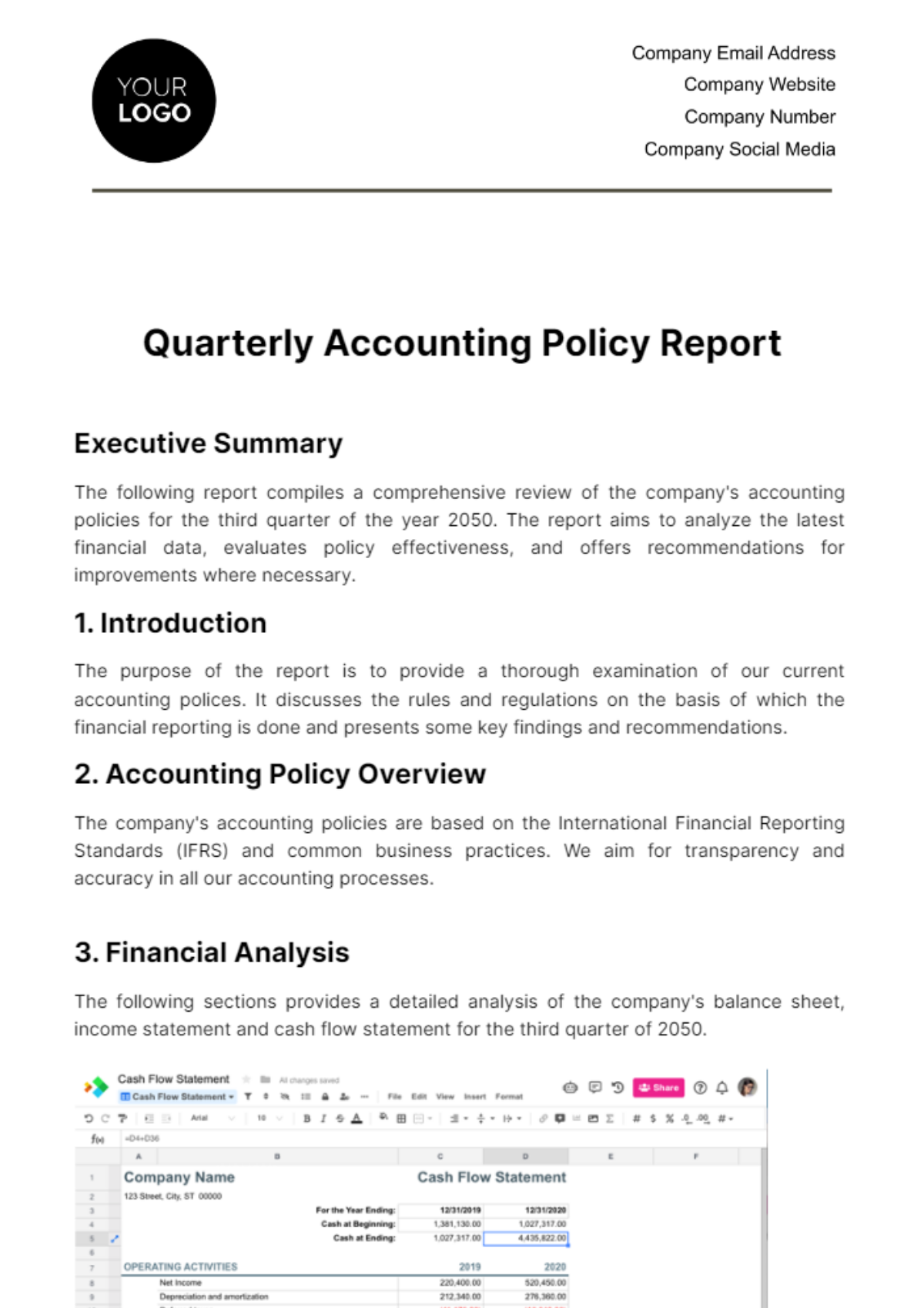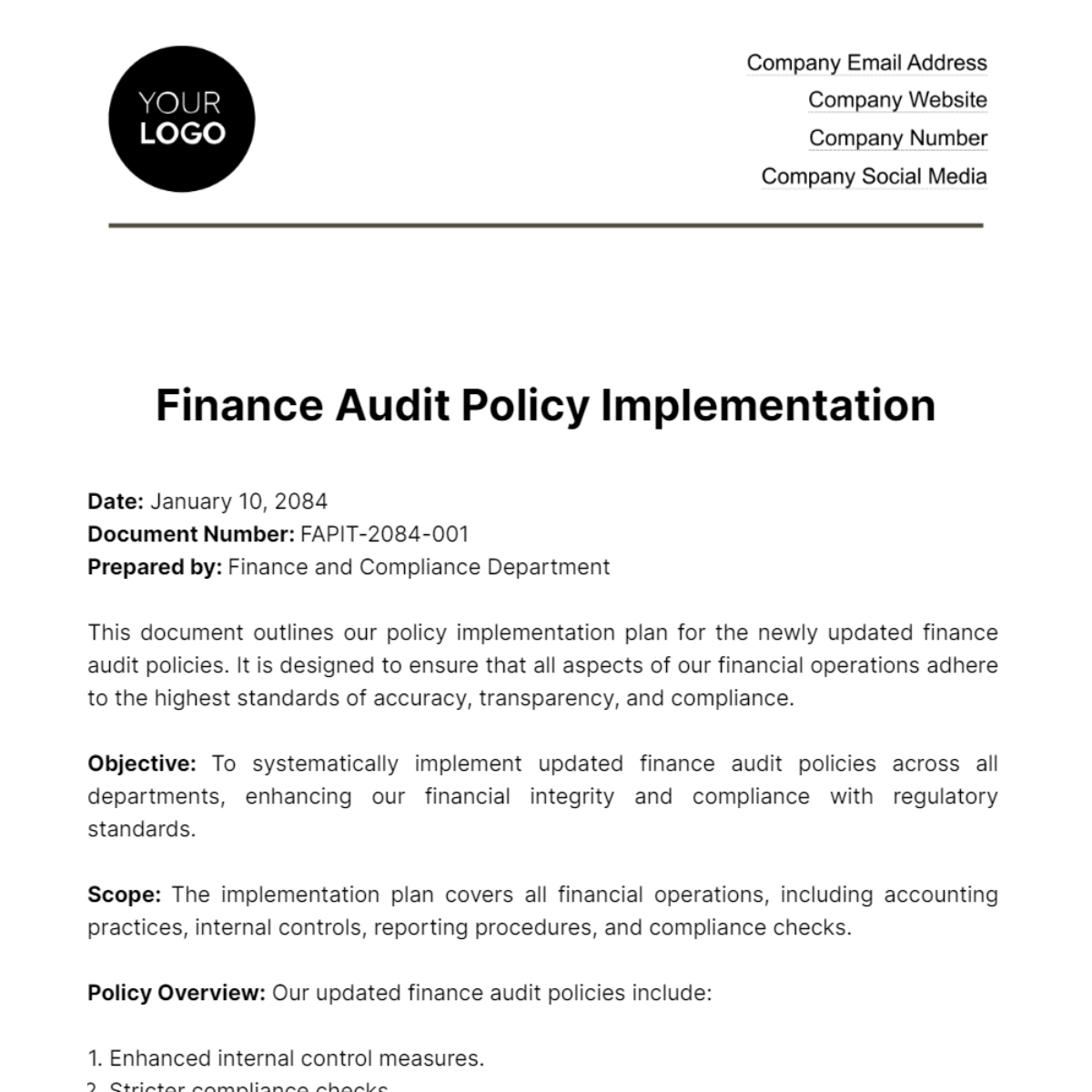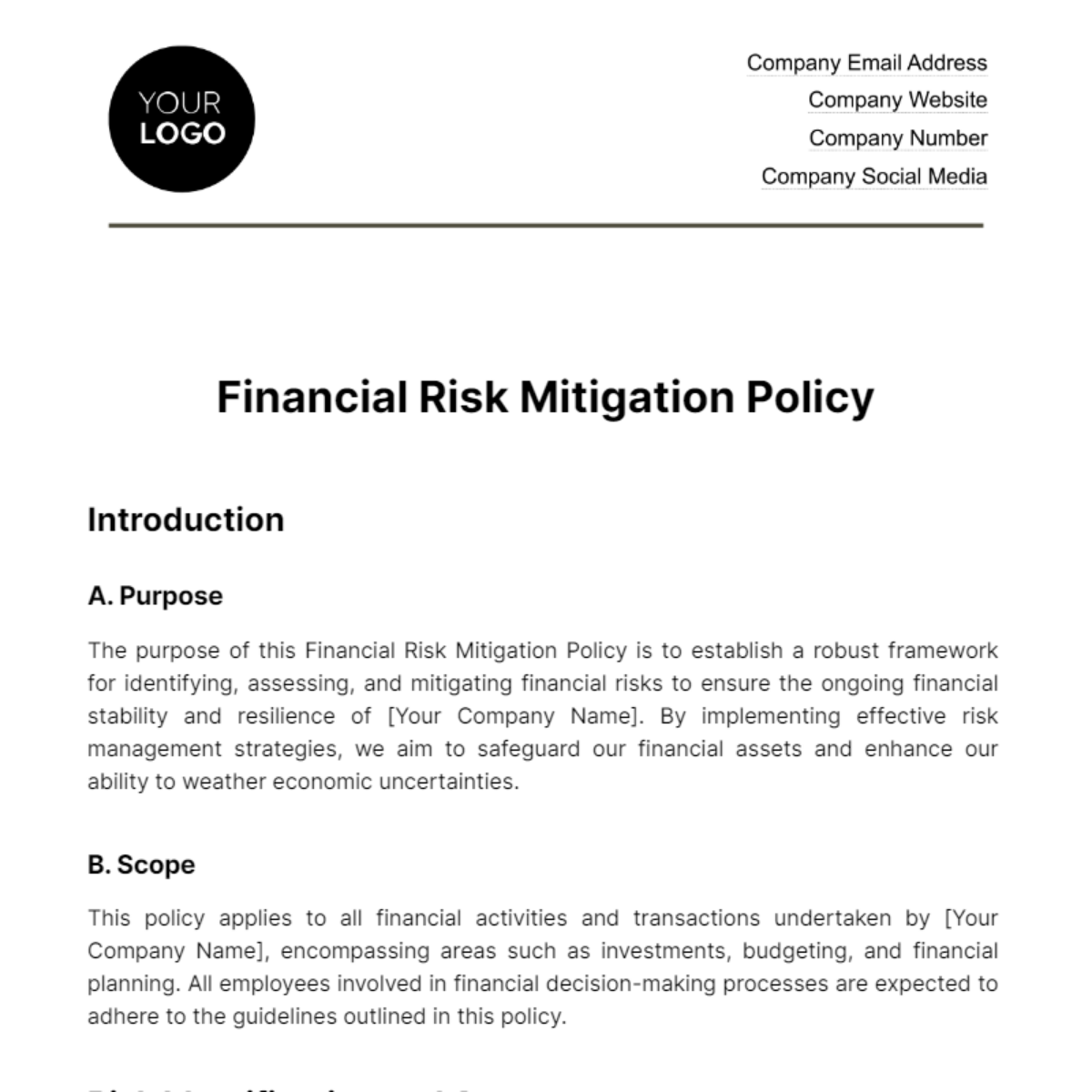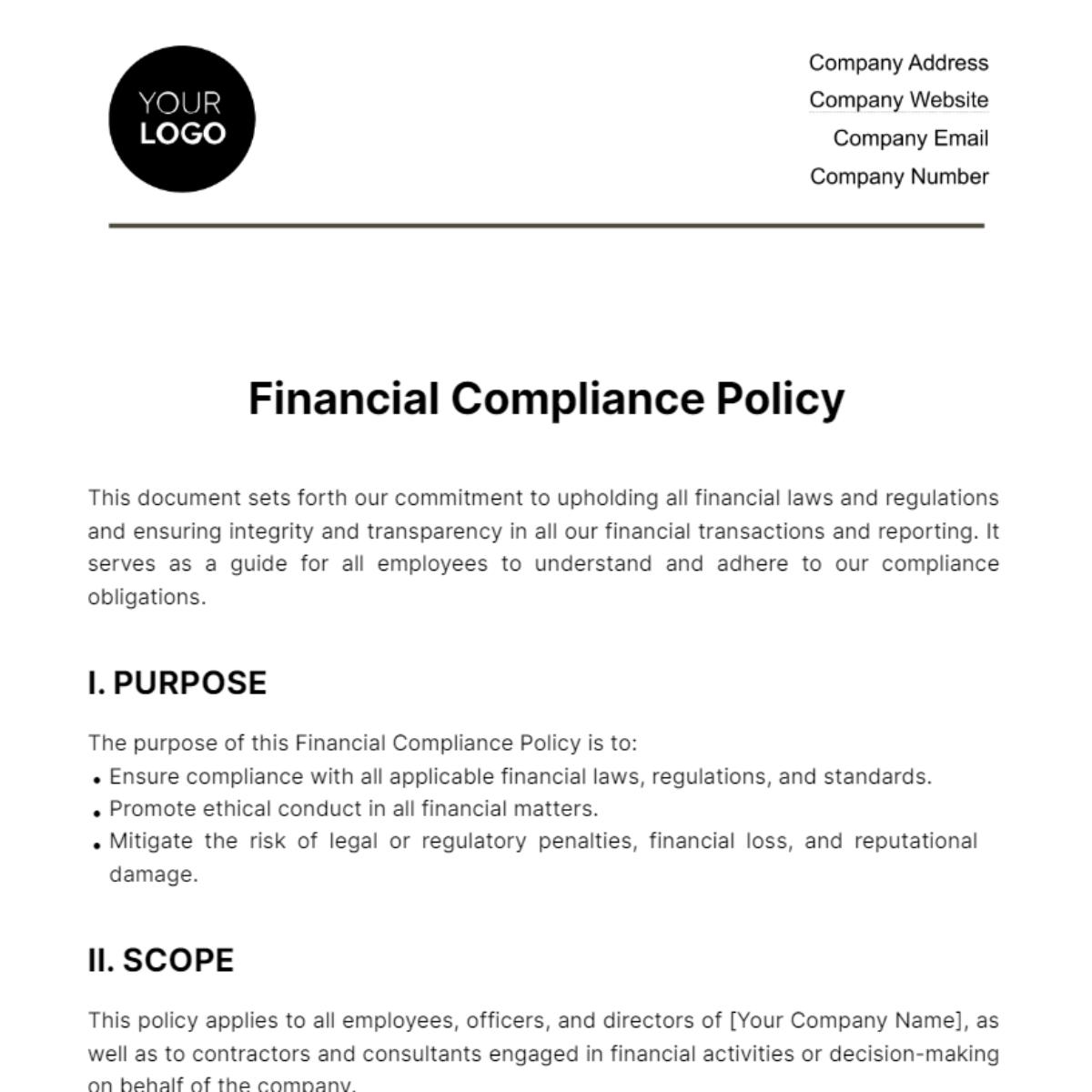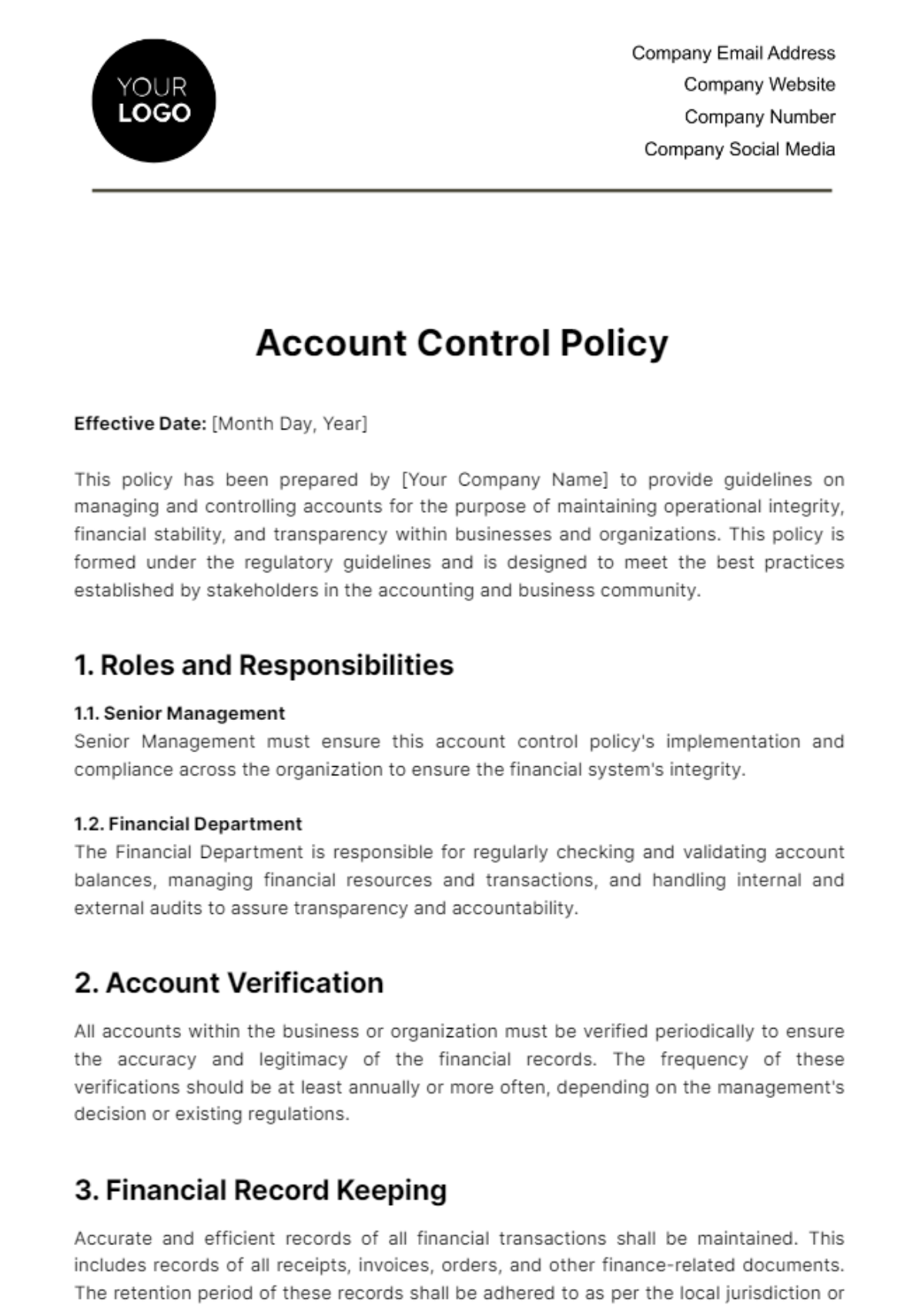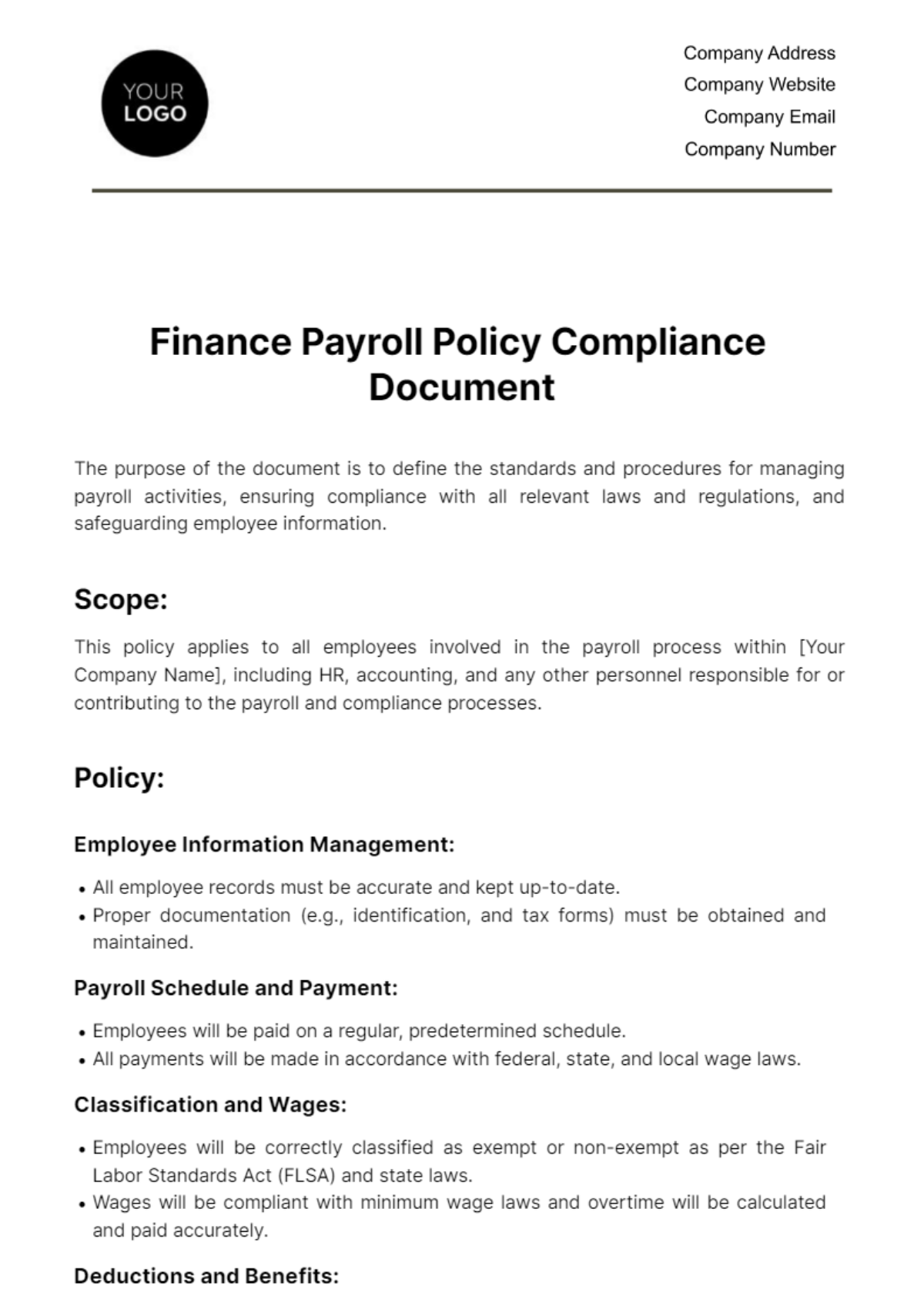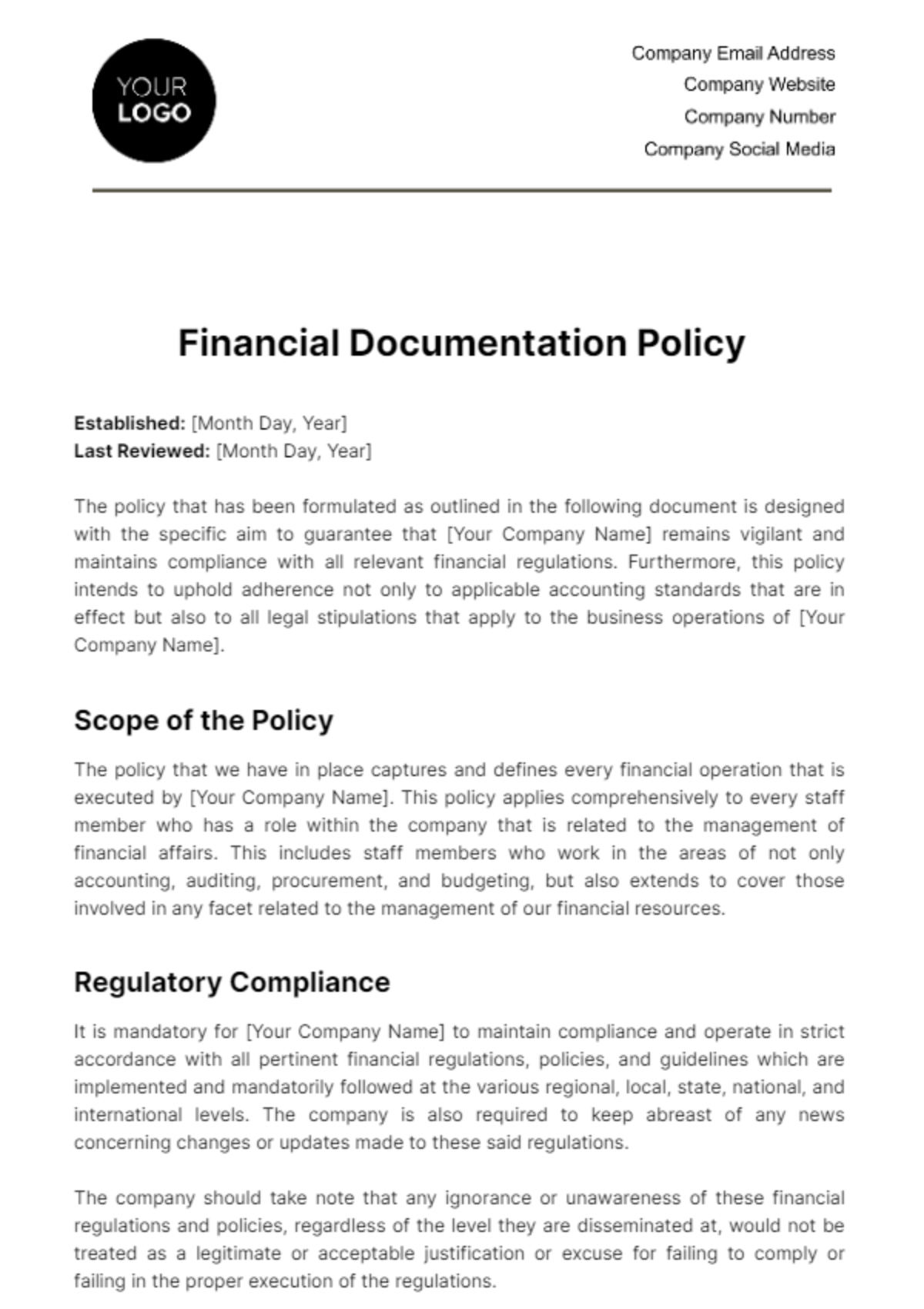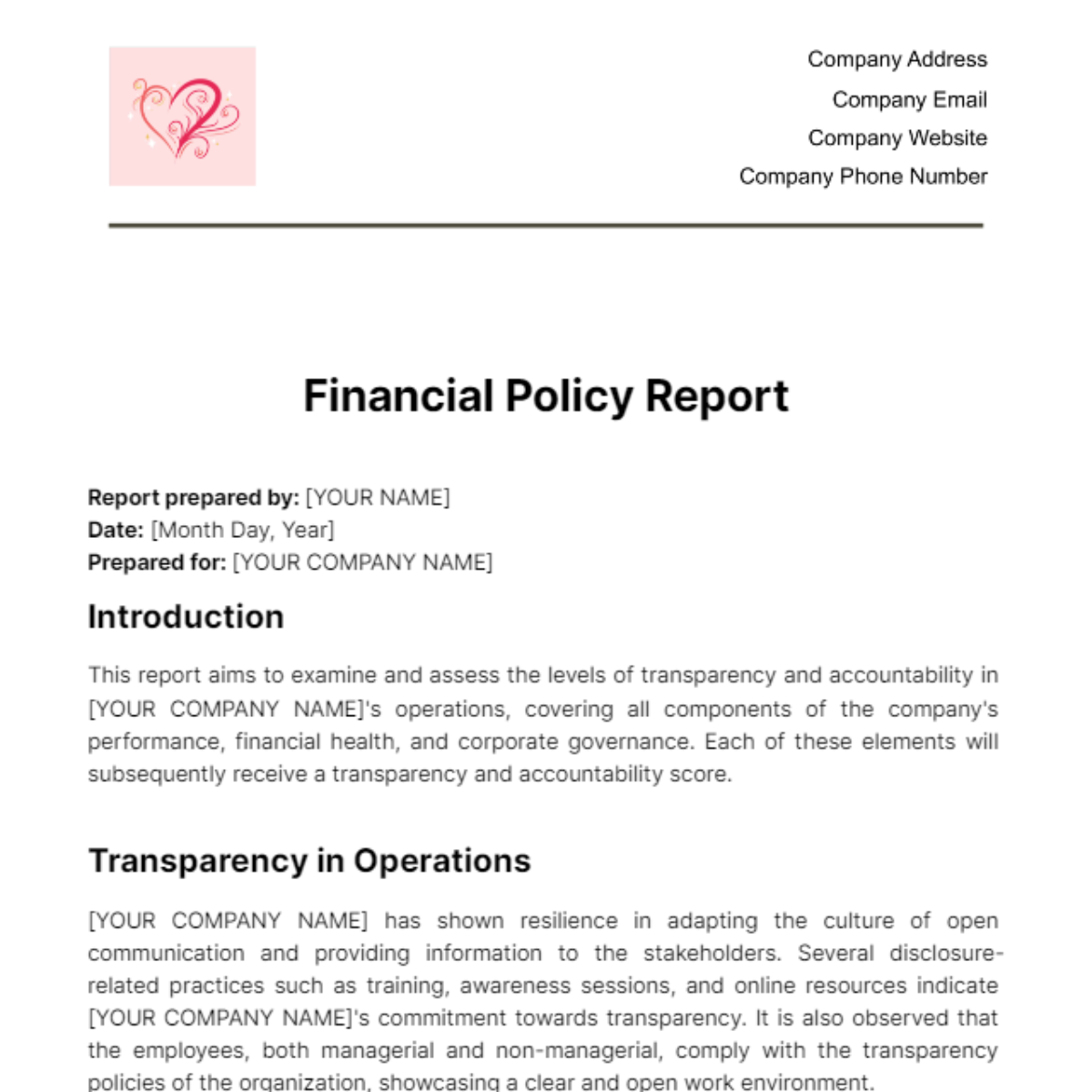Accounting Asset Account Policy
1.0 Introduction
[YOUR COMPANY NAME] has established the Accounting Asset Account Policy to provide a structured approach for managing the company's assets. This comprehensive policy is designed to ensure the highest standards of compliance and accuracy in the handling of assets, encompassing their acquisition, depreciation, disposal, and necessary adjustments. By adhering to this policy, [YOUR COMPANY NAME] commits to maintaining the integrity and coherence of its financial data, thereby enhancing the trust and confidence of our stakeholders.
2.0 Asset Classification
2.1 Tangible Assets: These assets are physical in nature, possessing a clear monetary value and a lifespan extending beyond one year. Examples include, but are not limited to, property, plant, and equipment.
2.2 Intangible Assets: Contrasting with tangible assets, these non-physical assets contribute to the Company's revenue generation over time and are not immediately convertible into cash. This category includes assets such as copyrights, trademarks, and goodwill.
3.0 Asset Recording and Valuation Principles
Consistent with our commitment to transparency and accuracy, [YOUR COMPANY NAME] ensures that all assets are recorded at their acquisition cost, adjusted for any accumulated depreciation (for tangible assets) or amortization (for intangible assets). This method aligns with the generally accepted accounting principles (GAAP) and provides a clear and factual basis for our financial reporting.
4.0 Asset Capitalization and Depreciation
4.1 Capitalization Criteria: Assets are capitalized when they meet defined criteria in terms of cost and useful life.
4.2 Depreciation Methodology: We employ the straight-line method of depreciation for all tangible assets, excluding land. This method spreads the cost of the asset evenly over its useful life, as dictated by relevant accounting standards.
5.0 Disposal and Retirement of Assets
The disposal or retirement of assets is managed with stringent procedures to ensure that the net book value of the asset is accurately removed from the Company's financial records. This process involves detailed documentation and approval to maintain the accuracy of our financial reporting.
6.0 Physical Audit and Verification
To ensure the physical existence and condition of assets, [YOUR COMPANY NAME] conducts an annual physical verification. This audit is crucial for reconciling our physical inventory with the recorded financial data, thereby ensuring accuracy and reliability.
7.0 Roles and Responsibilities
7.1 Finance Department: Primarily responsible for implementing, monitoring, and ensuring compliance with this policy.
7.2 Asset Managers: Tasked with the day-to-day management of assets, ensuring their proper use, maintenance, and record-keeping.
8.0 Policy Review and Amendments
This Accounting Asset Account Policy is subject to an annual review to ascertain its continued relevance and alignment with [YOUR COMPANY NAME]'s operational needs, industry standards, and evolving best practices. Amendments, if necessary, will be made to reflect changes in regulatory requirements, business environment, or company strategy.
9.0 Contact Information
For queries, clarifications, or feedback regarding this policy, please reach out to the Finance Department at [YOUR COMPANY EMAIL].





